Home builder Sam Petros bought Farnam Manor in 2019
 BY STAN BULLARD
BY STAN BULLARD
Sam Petros, after surviving and thriving for 40 years in Northeast Ohio’s home building and development market, knew in 2021 he was about to break one of the key rules of real estate: Never fall in love with the property.
“You never know when love will catch you,” the founder of Petros



Homes said of getting enthralled by the dilapidated Farnam Manor, 4223 Brecksville Road. He bought it in 2019 despite knowing better than most that he was embracing a money pit. e money burn is not over. So Petros will not say how much he has spent transforming the rundown place. He paid $285,000 for the two-story building on 5 acres in Richeld. Other costs easily exceeded $1
million. e village gave Petros Homes a tax increment nancing deal that fronted $375,000 in expenses. Summit County records say an addition to the back cost an estimated $600,000.









Recent history of the property has been checkered but its roots are deep.

Canon to establish health care unit in Cleveland area


 BY SCOTT SUTTELL
BY SCOTT SUTTELL
Canon


VOL. 43, NO. 45 l COPYRIGHT 2022 CRAIN COMMUNICATIONS INC. l ALL RIGHTS RESERVED NEWSPAPER CRAINSCLEVELAND.COM I DECEMBER 12, 2022 Q&A WITH BROADCASTER JOHN MICHAEL CAVS TV announcer traded a profession for a passion. PAGE 2 FOCUS: Companies link ESG goals, executive pay. PAGE 10
Tech giant Canon Inc. is gearing up to make Cleveland the home of a U.S.-based medical imaging unit that would signi cantly expand the company's research and development e orts in the country.
plans a big investment —
on the order of $300 million over the next few years — to establish what will be known as Canon Healthcare USA Inc. e unit will launch in January with about 20 employees but is projected to grow to 200 or more over the next four to ve years, according to the man tapped as chairman of Canon
Rich
rescued
Storied
eld home
CLEVELAND BUSINESS THE LAND SCAPE A CRAIN’S CLEVELAND PODCAST Low wages, staf ng shortages hinder growing need for home health services. PAGE 38 Tech giant to invest $300M See CANON on Page 45 See PETROS on Page 44
GUS CHAN FOR CRAIN’S
Cavs TV announcer traded a profession for a passion
Since John Michael started broadcasting Cleveland Cavaliers games in 2011 — rst on radio, then TV — he’s been able to lift his Cleveland Q-rating from roadie to something akin to a rock band’s opening act.
en there’s Austin Carr ...
“With Austin, it’s like you’re with the Beatles or a rock star or something,” Michael said, laughing. “Which I prefer. Once in a while (I get recognized), but I’m more of an under-the-radar guy, so it doesn’t bother me if I can remain anonymous here for a while.”
Truth is, Michael aims to be more like a good game o cial, one who enhances the game while remaining relatively unnoticed. His favorite play-byplay announcers are guys like Al Michaels, Vin Scully, Mike Breen and Pat Summerall, who have di erent styles but one thing in common.
“ e broadcast isn’t about them,” Michael said. “ e broadcast isn’t, ‘Hey, listen to all these quirky, funny sayings I can come up with.’ e broadcast is about the celebration of the game.
“To me, that’s my biggest takeaway from some of the greats. If you can watch the end of the game and you almost don’t even know who the broadcasters were, or didn’t even notice anything they say, but at the end of the game you say, ‘I had an awesome time watching that game and I really enjoyed myself for the last two hours,’ then we did our job. at’s the biggest compliment you can give a broadcast that I did.”
Michael took the Howard Cosell path to broadcasting, earning degrees from the University of Notre Dame in mechanical engineering, law and business administration before working for ve years as a trial lawyer for Pittsburgh-based K&L Gates. (Cosell rst practiced law in Manhattan before shifting to radio, then TV.) Michael caught the play-by-play bug while listening to high school football games on the radio and eventually turned a side hobby into his career, quitting his six- gure job in 2003 to call Single-A baseball in Hagerstown, Maryland.
e Aliquippa, Pennsylvania, native then shifted to calling hockey, rst for the Hagerstown Suns then the Lake Erie Monsters, which led to a job as a pregame host for the Columbus Blue Jackets on Fox Sports Ohio. In 2011, he beat out 200 applicants to replace Joe Tait as the Cavs’ radio announcer before replacing Fred McLeod on TV in 2019.

Michael spoke about this year’s Cavaliers, his unusual path to TV, his love of naps, his play-by-play approach and more in a phone interview on Monday, Dec. 5. e interview has been lightly edited for length and clarity.
` The fans’ love a air with the current Cavs started last year, but what have you noticed from fans so far this season?
People weren’t really expecting much at the start of last season, but to see this young core and to see how they’ve meshed and to see them play the fun and exciting brand of basketball that they’re capable of playing has opened a lot of eyes. And I think, too, people around here really embraced the team concept, that it wasn’t one player’s team. It was a number of di erent young players that contributed to making this team what it was. Then you go into the o season, they swing the move to bring in Donovan Mitchell. This was a team that was dangerous last year, but suddenly you see the potential and the possibilities for the future. When you look at the core and how the contracts lined up, now was the time to make the big splashy move for Donovan Mitchell. It makes this a team you can build over the next few seasons. Then you add to that this is a team of good folks.
Authentic players. Authentic coaching sta . Chemistry, where you have players that really like to be around each other. I think that’s come through. I think fans can see that and sense that, and I think it’s a big reason why the fans have embraced this team and are excited about what the future holds for the Cleveland Cavaliers.
` Let’s dive a little into your past. If this (broadcasting) hadn’t worked out, and you had remained a trial lawyer who did high school football and basketball games
on Friday nights, would that have been OK with you? Or do you think there would have been something missing?
That’s a really good question, because when people nd out what my original profession was, they think, “Well, you must have hated that.” No, I liked it, actually. It was a prestigious rm, the largest rm in Western Pennsylvania. I think I would have been ne with that. It was a profession that I enjoyed, but not something that I was so passionate about that I couldn’t wait to wake up and go to work. That’s how I describe what I do now. It’s like you’re not working. They pay me to go watch sports and talk about it. When I was practicing law, when I would relax and enjoy myself, that’s what I would do. I would go watch sports and talk about it. So to answer your question, yeah, I think I would have been ne with it. But after I started doing high school sports, it got to the point where I had to make a decision. I was already four years into being a trial attorney, practicing law in court and taking depositions during the day and sneaking out and moonlighting at night to do high school or small college football or basketball. When I got the o er to do Single-A baseball, I think I knew at the time, “If I don’t do this now, it’s probably never going to happen.” It was like, “You’re talking a good game. You’re saying, ‘I’d really
like to be a broadcaster. I’d really like to give this a shot.’” Well, this is your shot. These opportunities don’t come around all that often. Would there have been some regret if I didn’t make the decision to jump in and try to make the move? I think so. But would I have been probably perfectly happy to be a trial lawyer the rest of my life? I think probably I would. I just might have been missing some of that passion I found here in broadcasting.
` Is there any overlap in skills between being a trial lawyer and being a play-by-play announcer?
That’s a good question. When you’re in court, you need to be able to think on your feet. So much of what we do now throughout the course of a 2-hour, 2½-hour game (is think on your feet). You can prepare all you want, which is essential, which is key to enhancing the fans’ enjoyment of the game, which I think is the bottom line. But once the ball is tipped, then who knows? You have to be ready. You are, by de nition, reacting to what happens for two straight hours. Also, when you’re an attorney and you’re doing a deposition or a trial, there are transcripts. So you’re able to look back and see what questions you ask. And very early as a young attorney, you think you were saying one thing but when you read it back, it sounds a lot di erent. I think it teaches you quickly to use the right words, say what you mean and get your point across. Because when you’re a young attorney and you’re reading those transcripts, you think, “My goodness, this isn’t close to what I thought I was saying or the point I was trying to get across.” I think those might be areas where I took a little bit away from the legal business and use it every day here in the broadcast.
` But there’s also a con dence thing, too. There’s an ego to being a trial lawyer and to being a broadcaster. Not in a bad way, just in the sense of “I can do this and I belong on this stage.”
Yeah, and you also have to be able to stand there and tell a compelling story. That’s what you’re doing as a trial attorney, telling a story that makes sense and is logical and you’re persuading people of a certain point or points that you’re trying to make. I think a lot of that crosses over and plays into this industry as well.
` You mention the transcripts. I read that you do 10-12 hours of prep work before every game and I have to think that’s another thing you took from your law background.
Yeah, and in fact that’s my biggest tool for learning. I’m not exactly a classically trained broadcaster. I tell this to all young broadcasters — listen to every single game and every single show that you do. And listen critically. And when you listen back, write down all the things that you like and you don’t like. Write down all the things that don’t sound like all those broadcasters who you aspire to sound like. And study those things, so the next time you’re on the air, maybe you can eliminate a certain
percentage of those things. And the more and more you do that, the shorter and shorter your bad list will get and the longer and longer your good list will get. I still do that to this very day. We literally got o the plane from New York last night around midnight, and I’ve literally already reviewed the rst three-quarters of last night’s game. And all that goes into a big journal. It’s funny because on the left side, I put the column of things I don’t like, and on the right side, I put all the things I do like. And I usually have pages and pages of things on the left side and I might have one word that I liked on the right side. But I think that’s why I’ve been able to progress and get better, going from the minor leagues and the high minors into the major leagues.
experience,
you
` How long does it take you to come down from a good game? Do you still feel the adrenaline, or are you able to transition afterward?
`
I talked to Jim Donovan a few months ago and he mentioned that he listens to his broadcasts two or three times afterward. That has to be hard at times, especially if you think a broadcast doesn’t go well.
I think all broadcasters at rst aren’t particularly comfortable with the sound of their voice. I’m like, “Well, if you don’t like listening to yourself, there are probably a lot of other people who don’t like listening to you either.” (Laughs.) When you review a broadcast, your performance is always probably somewhere in the middle. You’re thinking, “Oh, I wasn’t very good tonight, I was late, I missed some stories I could have told.” Then you watch the game and it’s always a little better than you thought it was. Then other times, you’re like, “Oh, I nailed that call, I’m so happy with that.” And then you watch the show and it doesn’t quite reach the level that you thought it hit. In my
It does take a while to come down. People tease me all the time because I take monster naps, especially on game days. I try to nap for three hours, from maybe 1 to 4 (p.m.) for a 7 or 7:30 game. But it’s by design. Because when you have to be alert from 7 to 10 at night, you can’t go to bed at 10:30 or 11 o’clock. My pattern tends to be after games, I’ll come home and be able to watch a few more games while prepping for the next game. Whatever team we’re playing next, I’ll DVR their last two or three games and be able to cycle through most of those before going to bed at 2 or 3 (a.m.) on a game night. If you have to be at your most alert from 7 to 10, you set your day up so you need those monster naps throughout the afternoon, which I embrace and enjoy basically on every single game day.
` You have three analysts this season in Austin Carr, Brad Daugherty and Mike Fratello. What do you do when you’re preparing to change up for di erent guys, and how does each one di er?
Any good play-by-play guy adjusts to the strengths of his analyst. I think we’re incredibly fortunate to have not only such knowledgeable and talented individuals but also some really good people. Austin and I have been good friends for years and years, way before we started working together. He’s like part of the family. My 9-year-old and 6-year-old call him Uncle Austin. He
2 CRAIN’S CLEVELAND BUSINESS | D ECE M BER 12, 2022
how
performed always falls somewhere in the middle.
Q&A
— Joe Scalzo
Cleveland Cavaliers broadcaster John Michael. | CLEVELAND CAVALIERS
“IT’S LIKE YOU’RE NOT WORKING. THEY PAY ME TO GO WATCH SPORTS AND TALK ABOUT IT. ”
is honestly one of the kindest, most authentic, greatest humans on the planet. I just can’t say enough good things about Austin and obviously he brings so many great things to a broadcast. And I feel fortunate to have gotten to know Brad and Mike so much more over the last couple years as well. It’s funny that they bring such unique and di erent perspectives, but they’re all good people, they’re all wonderful analysts and they all in some way bring a sense of excitement and passion to the game. I think it means good things for Cleveland sports when you have such a great group of analysts and a great group of folks who are willing to be a part of the broadcast and able to bring it home the way those guys can.
` Kind of in the same vein, you replaced Joe Tait on radio and you replaced Fred McLeod on TV. Do you ever wish you could replace someone bad, instead of legends?
(Laughs.) Yeah, that’s right. For job security purposes, I don’t know if this was the best route to take. But it’s funny that you say that, because I always ip it and say that it’s been an honor that the organization has looked to me in each circumstance. To be able to take over for a person who was loved by so many. My joke always used to be like, “Why do I have to follow Brett Favre? I wish I could follow Don Majkowski.” It’s been an honor and it’s been special and to be so widely accepted by the fan base means a whole lot, and it’s something that’s never lost on me on a daily basis.
bit. You get in such a rhythm on the radio, saying “over the timeline” and “between the circles” and all those words are gone. And suddenly you’re like, “What am I even going to say?” But the adjustment was interesting, it was fun and I’m certainly happy to be on the television side. But, yeah, there are a lot of nuances that maybe weren’t even apparent to me working on the radio side before I headed into TV.
I’ve really enjoyed the transition to television. It’s interesting because when you’re on the radio side, you think you’ll have a lot more time to tell stories because you don’t have to relay every pass or talk about every dribble. But in reality, you almost have more time when you do radio. In TV,
there are replays coming, the analyst of course, there are breaks for sponsors. On radio, if you have something interesting to talk about or you have a story, you can weave that narrative into the game at any time. It’s your time. In television, you either have to wait for that person to do something or you have to wait for that person to be on the screen, because you have to match the words to the pictures. But I enjoy the TV side. There’s something obviously special about the viewer being able to see what you’re seeing. The call itself changes dramatically. A perfect example is, now that I’m on television, I never say the words “left to right” anymore, whereas I used to say “left to right” a few times every possession. Your locators in radio are so important so the listeners knows where the ball is, maybe even more important than who the players are touching the ball. You lose basically all the locators when you go into television. I basically never need to say “left elbow” or “right corner” because everybody sees where the ball is. At rst, that fouls up your rhythm a little
If you weren’t doing basketball, what would you want to broadcast?
`
It depends on the time in the season that you ask. When it’s February and I hear the phrase “pitchers and catchers,” I am dying to do some baseball. When it gets to August and training camp starts in the NFL, I’m thinking, “I’d love to be doing college football or NFL right now.” I’m equally con dent, broadcasting-wise, in all four sports. Also, I grew up in Western Pennsylvania, where there’s no NBA team and there was an NHL team (the Pittsburgh Penguins). I did the NHL before the NBA. So when I transitioned from the NHL to the NBA, there was part of me that thought, “Man, I’m really going to miss the NHL, because that’s what I grew up watching and I’m not going to be watching any hockey anymore.” But once you make the transition and you have a horse in the race, all of the sudden I forgot about hockey and I’m loving the NBA. Then when the NBA season ends, I think to myself, “You know what I’m watching more than anything else? The NHL playo s.” So I like all four sports equally, but don’t get me wrong — I love working for this Cavs organization. I do feel fortunate to be part of something more than what’s just on the oor in terms of what the Cavs do as a community organization. That’s what attracted me to Cleveland in the rst place. I was working my way up the hockey ranks and I got a call that said, “We’re starting a new hockey team in Cleveland. We heard you. We like you. Do you want to be part of the interview process?” And I said, “Tell me more,” and I loved what I heard from Day 1. And, again, it starts with being a Dan Gilbert-led organization and coming to a fan base that’s so knowledgeable. That’s ultimately what attracted me to Cleveland and led me eventually to this.
` Yeah, there’s not a lot of people who grow up watching sports in Western Pennsylvania who say, “I want to be part of Cleveland’s sports scene.” There’s a rivalry there. Do you still root for the Steelers or do you have those loyalties?

(Laughs.) Now you’re going to get me in trouble, right? Are you trying to make my approval rating plummet?

` I waited until the end to ask you!
(Laughs.) I think I can get away with some crossover because there is no NBA team in Western Pennsylvania and there is no NHL team here in Northeast Ohio. But, yeah, I still have family back in Pittsburgh who root for the bad guys, I suppose. And I get to visit often. That’s part of the reason I came to Cleveland. I’m only two hours away from my big family where I grew up, so that’s still a big part of our lives.
Each client is directly represented at all levels by a Partner of the firm with a combined 90 years of experience. No pyramid, no associates, no on-the-job training.

Our clients deserve the very best representation, so we structured our firm to allow each client, throughout the entire process, to work directly with Todd Sleggs, Robert Danzinger and Steve Gill. Our philosophy is to work cooperatively with school district and county officials to ensure that our clients pay the lowest possible real property tax obligations. If a fair resolution requires litigation, Sleggs, Danzinger & Gill have the depth of trial and appellate experience to handle the most complex valuation issues.
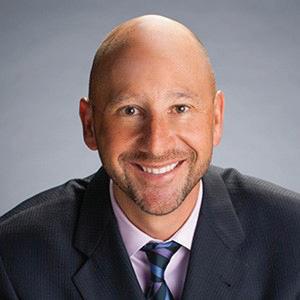

Whether the valuation relates to large industrial plants, apartments, shopping centers, warehouses, office buildings, hotels or any other type of commercial property, the attorneys at Sleggs, Danzinger & Gill will ensure that you receive the best counsel, legal advice and litigation expertise.
Most importantly, Sleggs, Danzinger & Gill wishes everyone continued health as we navigate through the Covid-19 pandemic.

DECEMBER 12, 2022 | CRAIN’S CLEVELAND BUSINESS 3
` Do you enjoy doing TV more or radio more?
When you hire Sleggs, Danzinger & Gill, you work directly with Sleggs, Danzinger and Gill.
W. Sleggs, Esq tsleggs@sdglegal.net Robert K. Danzinger, Esq rdanzinger@sdglegal.net Steven R. Gill, Esq sgill@sdglegal.net Reducing Real Property Tax Assessments Throughout Ohio And Across The United States Sleggs, Danzinger & Gill 820 West Superior Avenue, Seventh Floor Cleveland, Ohio 44113 (216) 771-8990 www.sdglegal.net Sleggs, Danzinger & Gill, Co., LPA
Todd
“I DO FEEL FORTUNATE TO BE PART OF SOMETHING MORE THAN WHAT’S JUST ON THE FLOOR IN TERMS OF WHAT THE CAVS DO AS A COMMUNITY ORGANIZATION. THAT’S WHAT ATTRACTED ME TO CLEVELAND IN THE FIRST PLACE. ”
Ongoing ght over $60M White Pond development headed to city council
BY DAN SHINGLER
e ght over whether and how to develop the city of Akron’s 65acre White Pond site — once slated for o ce buildings and now the proposed site of a $60 million, mostly residential development — seems destined to continue into the Monday, Dec. 12, city council meeting.

Council approved the change in use for the site from commercial to residential in September. At its upcoming meeting, it’s set to vote on a development agreement between the city and Akron-based Triton Property Ventures, which would provide for the sale of the 65-acre site. at comes after Mayor Dan Horrigan announced on Tuesday, Dec. 6, that the city had negotiated some amendments to Triton’s agreement and plans for the development.
e biggest, according to the city’s announcement, include Triton paying $15,000 into the city’s tree fund, money Triton president Alan Ga ney said would be used to o set some of the trees removed for the White Pond development. Also, the amount of retail space at the project would be reduced from 60,000 square feet to 30,000, and the sale would be subject to the city’s approval of the development’s environmental risk-mitigation plan, which Ga ney said he was already going to get approved before a sale. ose are nods to concerns raised by residents about both the environmental impact of the development, and how it might a ect tra c in the area.
But they are not the halt to development nor the more signi cant downsizing of the plan that some residents hoped for, nor enough to keep those who have been raising concerns from continuing their opposition.
eir last chance could be council’s Dec. 12 meeting, and they plan to show up, said Meghan ornton-Lugo, an assistant professor at the University of Akron who has become a leader of opposition to the project and heads the group Save White Pond.

e proposed changes aren’t nearly enough to satisfy ornton-Lugo, who said among her chief concerns are the wetlands on the site, which includes at least one large and one smaller pond. She said no one’s been able to tell her exactly which parts or how much of the site is wetland that should be protected, and she wants the city to determine that before moving forward.
“Without a current wetland delineation study, you can’t tell,” she said when asked how much of the site should be protected with wetland status.
As for the payment to the city’s tree fund, ornton-Lugo said she supports the city’s e orts to plant trees but doesn’t believe that $15,000 will come close to replacing the mature trees on the 29 acres of the site that Triton plans to build on, let alone trees on additional land it might clear for construction.
She takes exception to some of the drone photography the city has made available of the site, noting that it highlights the property’s


worst features, like dug-out areas, at a time of year when none of Northeast Ohio is looking its best to begin with.


“ at’s like showing a picture of me when I rst wake up in the morning and saying, ‘ at’s how Meghan Lugo looks throughout the day,’” she said. “ ey’re trying to show it in the worst light possible to make us look like a bunch of crazies … it’s not a dump, but they want people to think it is.”
ornton-Lugo said that, in her eyes, those photos illustrate how the city has dealt with the project and those opposed to it generally, and she said she doesn’t think city ocials have given clear answers or been transparent about the project.
“Either the experts in the city aren’t all that expert, or they’re not giving out full information,” she said.

Such complaints rankle some within city government who say they’ve been working to get just such projects o the ground as part of Akron’s e orts to rebuild its population after decades of decline that saw the city go from nearly 300,000 residents in the 1950s to around 200,000 today.
Horrigan’s announcement of the amended development plan included some passionate comments about why the project is needed and good for the city.
“As a city, we must embrace investment and progress. Without that, there can be no future growth for Akron,” Horrigan said in the release. “ e reality is that we have steadily lost residents since the 1960s and with that loss comes the loss of jobs, tax base, potential customers for retailers, and help covering the cost of much needed infrastructure for our city. is development would be one of the most signi cant housing investments into Akron in recent memory and would meet a need for additional new housing.”
Akron is also competing with surrounding areas for residential development, Horrigan noted. And it has been transparent, he insisted, meeting with citizens numerous times and taking into account their concerns.
“ is development will exist somewhere in Summit County. Why should we be content allowing this massive investment to go to a suburb of Akron when we could embrace it right here and help spur more growth for our residents and our local economy?” Horrigan asked. “My team has worked tirelessly over the past months responding to residents’ questions
and concerns. We have each had dozens of conversations and listened to hours of public comment. We have addressed questions about the environment, tra c, and the need for this type of residential development. I am more certain than ever, that this is the right choice for all Akronites, and that is who I was elected to represent.”
Meanwhile, in the center is Triton’s Ga ney, who said he only got interested in the project because he saw a for-sale sign the city had on the property.
Ga ney said he’s not looking to bad-mouth or ght with anyone, but that he believes his plan for the site is a good one — and one that does take into consideration the development’s environmental impact and seeks to minimize it.
If the city’s initial plan to clear the entire site and build o ce buildings and parking lots is on one end of the spectrum, and no development at all is on the other, Ga ney said he gures he’s in the middle.
“ eir original plan for this site was to e ectively clear out all the trees and ll in the ponds,” Ga ney said. “We’re trying to do our best to save things.”
For instance, he said, the site currently has tree canopy covering about 53% of its acreage. Ga ney said the development has been laid out to preserve as much as possible while still being economically successful and will still have 43% canopy cover once built.

Reducing the retail space will reduce the tra c generated by the site, he said, though Ga ney said a recent tra c study shows tra c’s been falling in the area since at least 2006 — and even as originally planned, the development would not have brought it back to its historic levels.
e retail space will be replaced with an undetermined number of ranch homes or townhouses, of which the project has 189, along with some apartments, planned so far, he said.
As for not making big changes in the development plan, Ga ney said his original plan didn’t need them, because it was a good plan already.
“We do believe we’ve been very conscientious,” Ga ney said. “Obviously, when you do a development, you impact the environment. We’re not naive, but we’ve tried to do it right.”
Now, he said, he’s hoping Akron City Council will agree with him one last time.
Shingler: dshingler@crain.com, (216) 771-5290








4 CRAIN’S CLEVELAND BUSINESS | DECEMBER 12, 2022 HOW TO FLY WITH SKY QUEST: » On-Demand Charter » Jet Club Memberships » Aircraft Ownership Opportunities 216-362-9904 Charter@FlySkyQuest.com FlySkyQuest.com Sky Quest is honored to be recognized as one of the fastest-growing companies in Northeast Ohio! FOR SALE PRICE REDUCED! •Total Space: 12,954 SF •Warehouse: 4,924 SF •Office: 8,021 SF •One Dock •Two Drive-In Doors, with ability to drive through the building •20’ clear height 1.79 AC with the ability for expansion Ample Parking 240V/600A/3-Phase Power Building Automation System (BAS) 800 SF Office area kitchenette/ lunchroom area 216.861.5592 KevinCallahan@HannaCRE.com Kevin Callahan 2398 E Enterprise Pkwy., Twinsburg, OH 44087 PROPERTY OVERVIEW PROVIDING COMMERCIAL REAL ESTATE LOANS THROUGHOUT NORTHEAST OHIO PERSONALIZED SERVICE, CONTACT JONATHAN A. MOKRI 440.526.8700 jmokri@cbscuso.com www.cbscuso.com Straight Talk, Smart Deals ® Loans up to $30 Million No Prepayment Penalties Investment & Owner-Occupied Commercial Real Estate AKRON
Dan
Ponds and woods cover much of the White Pond site, where the city of Akron hopes to see about 200 new homes built, if city council approves of the deal. | CITY OF AKRON
I know
matters
no.”
As former in-house counsel for a Fortune 50 enterprise, I’ve been a consumer of legal services.
I know what it’s like to wait (too long) for answers, only to hear “no, you can’t” or “no, it won’t work.”
My clients deserve better, and I make sure they get it.
Sound advice and timely responsiveness to all their labor and employment matters.
The laws and regulations are complex.
Missteps make headline news.
Immigration concerns make a tight talent market even tighter.
I use my native Spanish-speaking skills and hands-on litigation experience to advocate for my clients.

Guiding them to avoid problems before they can surface.
Finding—or creating—the right path for their business.
One that leads to “yes.”
I’m MARGARITA KRNCEVIC. I’m on your team.
www.beneschlaw.com
MY BENESCH MY TEAM
Of Counsel, Labor & Employment Practice Group
|
>
> (216) 363-6285
mkrncevic@beneschlaw.com
your
can’t wait for a
labor and employment “slow
Startup aims to use AI to help rebuild U.S. manufacturing
DAN SHINGLER
If America is serious about wrestling a chunk of its manufacturing back from overseas, it just might need Adam Ellis and his new Akron company, Harmoni Solutions.

Because to ful ll such ambitions is going to require a lot of skilled workers, including a lot of highly productive machinists. Ours are getting old.
“You go through most of the shops, and the guy running the CNC machine is usually in his late 50s or 60s,” Ellis said.
He’s right, too, at least in some places. at’s been the case in Northeast Ohio for years, as manufacturers complained that there were fewer and fewer machinists, welders and other highly skilled manufacturing workers.


at makes the productivity of the existing machinists more important, along with the ability to pass on knowledge to the next generation. Ellis thinks he has a device that can help with both.
If shops can track their jobs, time, waste, the performance and e ciency of their machinists — and increase workers’ skills at the same time —
shops can make more money, he contends. His company and its eponymous product, Harmoni, can do just that, he promises.













“It is ‘Moneyball,’ for machine shops,” Ellis said.





If you’ve seen the movie or read the book, you know how important data is to the “Moneyball” system of management by data — and the data needed to do that is what Ellis said Harmoni aims to provide to its clients.

e Harmoni device looks a bit, perhaps on purpose, like an oversized Nest thermostat, a device Ellis compares it to. Nest represents the Internet of ings for consumers, he said, while Harmoni represents the Industrial Internet of ings, known in manufacturing as Industry 4.0 because acolytes say it represents the fourth industrial revolution.
e Harmoni device mounts to a CNC machine and becomes an information sucking and processing attachment.

Ellis said he took pains to build it so that it can interface with a broad range of CNC machines, from various manufacturers, as well as di erent eras. For example, Harmoni has

ports that can take in analog data from older machines.



In addition to information from the machine, the device also gets it from things with RFID chips, which use radio frequencies to transmit


data, particularly identi cation information, over short distances.










ose chips, which Ellis said now cost pennies each, go on the pieces of work that the machine will process.
e machinists who use the machines have them, even the work orders that accompany each job have them.

Armed with data from the machines and data from the people using them, work documents and the work itself, Ellis says Harmoni can provide machine shops with data that will result in reduced costs, less waste and improved e ciency.
“We’re trying to share moments of time in many di erent places, to create huge revenue savings,” Ellis said, while giving a virtual tour of how the system works.
Let’s say Bob, a machinist, is about to do a job of some sort. He gets the piece he is working on, the documents that tell him what needs to be done, and he goes to the CNC machine he needs to use — it doesn’t matter whether it’s a 4-axis milling machine or a lathe.
“It knows Bob just walked up, because of the (RFID) sticker,” Ellis said. It also reads the sticker on the work, so it knows what Bob is about to put into it, and it reads the documentation Bob has for the job. With all of that, it knows which program or programs Bob will need to use, quickly o ers and loads them, and even passes along any special instructions he might need.
6 CRAIN’S CLEVELAND BUSINESS | D ECE M BER 12, 2022
MANUFACTURING
See STARTUP on Page 45
Harmoni founder Adam Ellis gives a virtual walk through of his new system, which aims to bring Industry 4.0 to CNC machine shops. | DAN SHINGLER CRAIN’S CLEVELAND BUSINESS
Six NE Ohio expansion projects win state assistance
e Ohio Tax Credit Authority (TCA) in its nal meeting of 2022 approved state assistance for a half-dozen projects that stand to have a big impact in Northeast Ohio in 2023.
TCA on Wednesday, Dec. 7, approved state tax credits tied to job creation for a total of 14 projects statewide that are expected to create a total of 1,663 new jobs and retain 3,457. Gov. Mike DeWine’s o ce said in a news release that the projects are expected to result in “more than $99.7 million in new payroll and spur more than $202.6 million in investments” across the state.
It was a particularly Northeast Ohio-heavy meeting for TCA, with six of the 14 projects from the region: one in each of Cuyahoga, Lake, Lorain and Trumbull counties, and two in Stark County. e six projects are projected to create a total of 438 full-time jobs.
Here’s a breakdown of the Northeast Ohio projects, listed alphabetically:



















` Acorn Stairlifts Inc. of She eld Township, in Lorain County, expects to create 125 full-time positions, generating $5.47 million in new annual payroll, as a result of a planned expansion.
e company, which makes and installs in-home stairlifts, received an eight-year, 1.297% Job Creation Tax Credit for this project. TCA estimates the value of the credit at $525,000. (For this and all projects, TCA notes that the estimated values of the potential tax credits is based on companies meeting all requirements, so the actual value of the credit is based on jobs created and new payroll tax generated, as veri ed.)
For the proposed project, Acorn is considering a Lorain County building for a warehouse and distribution expansion, as well as the relocation of back o ce and light assembly work.
As part of the tax credit agreement, TCA would require the company to maintain operations at the project location for at least 11 years. It noted that Ohio “is competing with Florida for the proposed project” and that state support “will help ensure the proposed project moves forward in Ohio.”
` Biery Cheese Co., in Louisville, in Stark County, expects to create 51 full-time positions, generating $2.2 million in new annual payroll and retaining $18 million in existing payroll, as a result of a consolidation and expansion of manufacturing operations by the processor of cheese products.
TCA approved a six-year, 1.13% Job Creation Tax Credit for the project. e tax credit’s estimated value is $135,000. Biery would be required to maintain operations at the project location for at least nine years. TCA said Ohio is competing with Wisconsin for the proposed project.







` Knight Material Technologies LLC of Canton, in Stark County, expects to create 45 full-time positions, generating $2.5 million in new annual payroll and retaining $5.9 million in existing payroll, as a result of the company’s expansion project.
e company, formerly known as Koch Knight, makes ceramic mass transfer and acid-proof equipment.















e expansion at the company’s Canton plant would help it “address capacity shortages in the industry,” according to information provided by the state. Ohio is competing with Texas and Pennsylvania for the project.
TCA approved a six-year, 1.25% Job
Creation Tax Credit for Knight. e tax credit has an estimated value of $170,000.
` Momentive Performance Materials Quartz Inc. in Strongsville, in Cuyahoga County, expects to create 97 full-time positions, generating $7 million in new annual payroll and retaining $46.1 million in existing payroll, as a result of a planned expansion project.
e company has a spinout, Momentive Quartz Technologies, that produces quartz and ceramic used in semiconductors and microchips in computers, medical devices and other end-uses. TCA approved an eightyear, 1.584% Job Creation Tax Credit
for the project, in which Ohio is competing with Asia.
Momentive would be required to maintain operations in the project location for at least 11 years.
e tax credit has an estimated value of $790,000.
` MUM Industries Inc. in Mentor, in Lake County, expects to create 45 full-time positions, generating $2.1 million in new annual payroll and retaining $4.3 million in existing payroll, in a planned expansion.
For MUM, a maker of metallic and non-metallic enclosures for electrical equipment, TCA approved a six-year, 1.127%, Job Creation Tax Credit.


Ohio is competing with Texas for the expansion project. e state said MUM “is evaluating relocation of jobs and operations” from California to either Ohio or Texas “due to improved cost e ciencies.”
e tax credit has an estimated value of $115,000.
` Shambaugh & Son LP in Brookeld Township, in Trumbull County, expects to create 75 full-time positions, generating $4.1 million in new payroll, as a result of planned project that would include construction of a new facility.
e company does new and retrot construction for industrial, food


processing, commercial, institutional, health care, pharmaceutical and biofuel projects.





































TCA approved a seven-year, 1.417% Job Creation Tax Credit for this project. e state said Shambaugh is “considering establishing a new facility focused on the prefabrication of re suppression systems needed to support strong product demand.”
Ohio is competing with Indiana and Pennsylvania for the project.
e tax credit has an estimated value of $390,000.
Scott Suttell: ssuttell@crain.com, (216) 771-5227, @ssuttell

Introducing a new energy in banking.
Hello! We’re coming together to help more people thrive. We’re two partners equally passionate about delivering outstanding banking services to our clients. Together, we’ll activate investments in people and technology that energize families, businesses, and communities to prosper.
DECEMBER 12, 2022 | CR AIN’S CLEVE LAND B USIN E SS 7
myNYCB.com agstar.com
Equal
Housing Lender | Member FDIC
SCOTT SUTTELL
FINANCE
EDITORIAL
Job well done
Sen. Rob Portman has three full weeks left in his term, and we’re certainly not trying to hustle the Cincinnati Republican out the door. But since he made his o cial farewell speech on the Senate oor last ursday, Dec. 8, we wanted to take note of Portman’s signi cant accomplishments in the Senate and the guidance he o ers for a way forward in American politics.
He’s leaving on an active note. Portman in 2022 was the key Republican involved in passage of the big infrastructure bill, which will pay dividends for years to come. He was an important backer of the CHIPS bill that will bolster smart manufacturing and secured Intel’s huge investment in Ohio. Portman also was one of 12 GOP votes for legislation to protect samesex and interracial marriages in the wake of the Supreme Court’s decision to overturn the federal right to an abortion.
It’s not just high-pro le matters that made Portman a consequential senator. is month, for instance, he and Sen. Debbie Stabenow, a Michigan Democrat, introduced the Great Lakes Authority Act of 2022, which, as website MLive. com noted, “would create a federal-state body tasked with promoting investments in manufacturing communities and economically distressed areas of the region.”
at bill is in keeping with Portman’s record of working with Democrats, including his fellow Ohioan, Sen. Sherrod Brown, on substantive issues that make a real di erence in the lives of voters. He made a nod to Brown during the farewell speech, saying, “We’ve canceled each other’s votes on many other issues where we have disagreed. I’m proud that we worked together on Ohio issues like the Great Lakes, trade enforcement, addiction and important judicial nominations like district court judges and U.S. attorneys. Despite our differences, we made progress for Ohio together.”
Portman noted that a mission statement in his o ce reads, in part, “Our mission is to deliver bipartisan results through e ective servant leadership with integrity, sel essness and excellence so all Ohioans can reach their God-given potential. Servant leadership begins with a respect for constituents, by listening to them, and understanding their concerns. And then, whenever possible, delivering results for them.”
Ohio is one of ve states with senators from di erent parties. Portman and Brown made it work for Ohio, and it’s our
hope that Ohio’s incoming Republican senator, JD Vance, helps continue that tradition.
Work experiment
If you’re in a year-end crunch of a lot of work and tight deadlines, a four-day workweek might sound like just the thing to help get you through, refreshed and reinvigorated, to the following Monday.
But would it work as a standard way of business life, 52 weeks a year?
A nonpro t advocacy group called 4 Day Week Global just oversaw what it calls the rst large-scale study of a four-day, 32-hour workweek, involving 33 companies from the U.S., Ireland and Australia, including one from Northeast Ohio: Advanced RV of Willoughby. It’s the rst in a series of pilots coordinated by the nonpro t, and it yielded what some might consider a surprising result: Not one of the participating companies is returning to a standard ve-day schedule.
As Bloomberg noted, “Dozens of indicators, ranging from productivity to well-being to fatigue, all improved as the companies transitioned. e ndings come at a time when businesses and their employees are struggling to recover from the pandemic, with ongoing high rates of burnout, stress and fatigue. Organizational performance measures were strong. Revenue rose about 8% during the trial and was up 38% from a year earlier.”
New pilots have begun, and researchers are adjusting data collection to gain more insight into how a four-day workweek might work, more broadly applied.
One study does not make for good policy, and there’s certainly some self-selection bias. It’s unlikely a company would sign up for the pilot if it weren’t on some level open to a four-day week.

While this kind of structure probably wouldn’t work universally, companies having trouble attracting and retaining should be open to experimenting to nd what works best in a new workforce era. ere has been federal legislation introduced that would set 32-hours-per-week as the standard — it hasn’t gone anywhere, and almost certainly won’t — but the free market works much faster than the government.
Executive Editor: Elizabeth McIntyre (emcintyre@crain.com)
Managing Editor: Scott Suttell (ssuttell@crain.com)
Contact Crain’s: 216-522-1383
Read Crain’s online: crainscleveland.com
OPINION
Shareholder democracy doesn’t work
LUIGI ZINGALES AND OLIVER HART/BLOOMBERG OPINION
e ambitious idea that companies can be run like democracies, with widely dispersed shareholders exerting inuence over management, has long failed in practice.
Many people own shares, but very few bother to vote at company meetings — in part because they have other concerns, in part because systems of corporate governance have silenced their voices.
at’s now changing — and a simple voting reform could go a long way toward making shareholder democracy a reality.
For decades, traditional nance theory assumed that all shareholders wanted the same thing: the maximum possible pro t. is rendered voting all but irrelevant. Time and again, the Securities and Exchange Commission struck down activists’ e orts to put social issues on corporate ballots — including a 1950 proposal that Greyhound “consider the advisability of abolishing the segregated seating system in the South,” a 1970 proposal that Dow Chemical not sell napalm without “reasonable assurance that the substance will not be used on or against human beings,” and a 2014 proposal that Walmart’s board oversee the sale of “products that especially endanger public safety.”
A new, better paradigm is emerging.
It recognizes that people, shareholders included, care about the broader consequences of companies’ actions.
ey might not sleep well knowing that some of their dividends come from polluting the environment, pushing opioids or supplying weapons to dictators. ey need a return on investment, but they’re willing to accept a little less in exchange for a better world.
PEOPLE CARE ABOUT THE BROADER CONSEQUENCES OF COMPANIES’ ACTIONS.
Growing concern about climate change has forced the SEC to shift position, allowing more environmental and social proposals onto corporate ballots. While such votes aren’t binding, it’s hard for directors to ignore them if they garner majorities, because their supporters might also vote against the directors’ re-election.
Yet a question remains: How, and to what extent, will shareholders exercise their voting rights? Most individuals own stock via nancial intermediaries such as mutual funds. As they realize that voting matters, they’re increasingly pressuring such intermediaries to cast ballots re ecting their preferences — which, in a polarized world, puts asset managers in a politically fraught position. In response, rms such as BlackRock and Vanguard are experimenting with ways to devolve voting back to individual investors.
Problem is, individuals will still be too busy to cast ballots in myriad corporate proxies. In a recent paper, we o er a solution. BlackRock already gives institutional investors a low-hassle option: vote their shares according to one of fourteen di erent guidelines developed by proxy advisers, customized to speci c concerns such as the environment or the treatment of workers.
Extending this option to individuals would be relatively simple. Granted, it would limit investors’ choices to the available predetermined guidelines. But over time, competition will probably lead to the emergence of guidelines catering to most needs.
Corporate democracy is not only feasible — it’s inevitable and empowering. e right question isn’t what companies can do for society, but how shareholders can compel companies to act in their interests — which might not always be making as much money as possible.
Write us: Crain’s welcomes responses from readers. Letters should be as brief as possible and may be edited. Send letters to Crain’s Cleveland Business, 700 West St. Clair Ave., Suite 310, Cleveland, OH 44113, or by emailing ClevEdit@crain.com. Please include your complete name and city from which you are writing, and a telephone number for fact-checking purposes.
Sound o : Send a Personal View for the opinion page to emcintyre@crain.com. Please include a telephone number for veri cation purposes.
8 CRAIN’S CLEVELAND BUSINESS | D ECE M BER 12, 2022
RICH WILLIAMS FOR CRAIN’S CLEVELAND BUSINESS
Uncle Sam’s cheap debt fantasies will cost all of us
BY ALLISON SCHRAGER/BLOOMBERG OPINION

All the talk lately about the size of the national debt is obscuring the real problem: e U.S. government made the wrong bet on interest rates, and that will cost taxpayers for years to come.
e government took on an unprecedented amount of debt in the last ve years. Reasonable people can disagree about the level of spending, but the clear policy error was choosing to nance that spending with shortterm debt while rates were at record lows. Now that rates are rising, so are the costs of nancing all this debt. It didn't have to be this way. We could have locked in rates when they were low. But at the time, there was a pervasive belief that rates would never increase — even though, eventually, they always do. Now, as we face high debt service costs for decades, we can't a ord to ever forget this lesson.
We got used to low rates, since they have been well below 5% for nearly two decades and only seemed to go down. Now rates are rising and causing all kinds of disruption in many sectors of the economy. One saving grace is that many households have a xed-rate mortgage that shields them from interest-rate risk. e government could have made a similar choice when it took out its debt. Borrowing short is the basic equivalent of taking on an adjustable-rate mortgage when a xed-rate loan could have been obtained at an absurdly low interest rate. Now the government — and its taxpayers — face interest-rate risk that may limit spending in the future.
Outstanding U.S. debt increased to $30.5 trillion from $19.8 trillion between 2017 and the second quarter of 2022. A lot of that spending was used to get the economy through the pandemic disruptions. But in the years before, macroeconomists argued governments should spend more and not worry so much about debt because interest rates were so low. When rates are low, they said, the economic growth generated by the spending would more than pay for the cost of borrowing. If you borrow at 2% and invest the money in something that pays 8%, you’ll make a big pro t. But that thinking — just like many an asset manager selling a leveraged bet — was based on an assumption of no risk: that growth would be positive and interest rates wouldn’t increase. e government might have reduced its risk by locking in the low rates and issuing more long-term debt. A 20-year Treasury was yielding only about 1% in 2020. Instead, the government mostly nanced its spending with debt that would mature in less than ve years. Financing its spending with short-term bonds means the government must roll over the debt as it comes due. e yield on a one-year Treasury is now more than 4.7%,

compared with a 20-year rate of 1.46% the government could have secured in 2021.

If rates continue to rise, even as in ation falls, this will impose big costs on the government and, potentially, taxpayers. e Congressional Budget O ce calculated that if 10-year rates gradually rise to 4.6%, then servicing the debt will cost 7.2% of GDP by 2052. It was only 1.6% of GDP last year and hasn't exceeded 3.2% since 1960. We should be so lucky. Interest rates already far exceed the CBO’s 2021 forecast, and are going up much faster. If rates rise to their historical average — above 5% — servicing the debt will cost far more.
e government had its reasons for issuing the shortterm debt.


If interest rates had stayed low forever, issuing shortterm debt and rolling it over would have been cheaper than nancing the spending with long-term bonds. After all, short-term rates tend to be lower than longer-term debt, and we saved a few basis points. Larry Summers co-authored a paper in 2016 examining the wisdom ofnancing debt with short-term bonds, weighing the benet of lower costs against the risk of interest rates rising.
If rates were anywhere close to their historical average, that is a reasonable question. But when rates are near zero, the risks clearly outweigh the bene ts. Rates were at historic lows, which meant odds were they would eventually go back up. And they did.
e Trump administration’s Treasury Department also claimed that there was not much demand for longterm bonds, though it’s not clear that’s true. e U.K. issues more long-term bonds. e average maturity on their conventional bonds is about 14 years, compared with about 5.5 years on U.S. debt. And the U.K. treasury (until very recently) found ample demand for long-term debt. Both insurance companies and pension funds tend to need more duration in their portfolios as they issue very long-term liabilities. Longer-term debt helps them hedge their risk.
But when rates were at historic lows, we made a different choice. And now we are all vulnerable to rising rates becoming a scal burden. It’s worth noting that average maturity on debt increased in the last year as spending fell and some short-term debt matured and didn’t need to be re nanced. But the average maturity of marketable debt has remained around ve years, no matter the interest rate.
ere are sharp divides among policymakers and economists on how much money was spent, how it was spent and if we should spend even more. But one important lesson they should all learn is, no matter how much you spend, always lock in low rates when you can.
Applauding those who kept the Browns in Cleveland
I read with interest the recent piece in Crain’s Cleveland Business (“Notable Executives in Diversity, Equity and Inclusion,” Oct. 24, 2022) in which esteemed lawyer and community leader Fred Nance of Squire Patton Boggs was recognized as the man who kept the NFL franchise Cleveland Browns in Greater Cleveland.
Some recall the rumors that were abroad in Cleveland in late fall 1995 concerning the football team being sought by the city of Baltimore, the aging and decrepit Municipal Stadium, and the tension between the then-mayor and then-owner of the Cleveland Browns. e nation and our region were electri ed by the news conference in which the team announced its intention to move to Baltimore on Nov. 6, 1995.
A lawsuit was led the same morning by the city of Cleveland which sought, ultimately, to enjoin the move because a lease between the parties committed the team to playing three more years in Cleveland Municipal Stadium.
e case was, by random selection, assigned to my



docket, a relatively new judge. e city of Cleveland was represented by Fred Nance and his team from what was then Squire, Sanders and Dempsey. e Cleveland Browns were represented by Bob Weber and Jones Day. e three-day hearing was nationally televised and was on newspapers’ front pages and the lead story on TV networks across the United States.
at Cleveland retained the Browns name and colors, and that the NFL helped to nance the construction of a new stadium, is due entirely, notwithstanding recent judicial campaign pu ery, to the heroic e orts of Fred Nance in persuading the court that the lease was enforceable, and of Bob Weber, in persuading the NFL and the owners to accept the settlement that resulted.
Never mind the performance of the team since 1999. I believe this region would have been permanently diminished without the e orts of Mr. Nance and Mr. Weber that kept the Browns in Cleveland.
Judge Kenneth R. Callahan
Cuyahoga County Court of Common Pleas


Quality Service You Can Trust





Metal Roofing is a standing seam metal roofing company recognized for our expertise and unparalleled attention to detail. A standing seam roof has the ability to transform the look of your home and is able to withstand harsh weather conditions. Our track record of high-quality projects has built us a reputation for short lead times and quick turn arounds.

DECEMBER 12, 2022 | CRAIN’S CLEVELAND BUSINESS 9
PERSONAL VIEW OPINION
Mark
Owner Cell:
Office:
Financing Options Available RESIDENTIAL | COMMERCIAL | INDUSTRIAL SPECIALIZING IN STANDING SEAM Akron 330.535.2661 Cleveland 216.831.3310 Medina 330.239.0176 Who is managing your properties? Call us today! Our property management, facility management & maintenance teams are ready and able to respond to the urgent needs of our owners and tenants at any time. www.naipvc.com
Windsor
Wengerd,
440-321-9434
440-313-5799
www.pleasantvalleycorporation.com
LETTER TO THE EDITOR
LESS TALK AND MORE ACTION ON ESG
Deloitte’s Nick Accordino discusses what new disclosure requirements from the SEC mean for both public and private companies. PAGE 12
GETTY IMAGES/ISTOCK
Companies link



ESG goals, executive pay






Survey nds varying approaches businesses are taking to integrate measures into daily operations
BY DOUGLAS J. GUTH
Large U.S. companies are increasingly linking executive compensation to some form of ESG performance, according to a new governance study released earlier this fall. e question for observers of this trend is to what length these social responsibility principles are truly being prioritized.






e survey from e Conference Board think tank reveals an uptick in S&P 500 companies adopting ESG performance measures — from 66% in 2020 to 73% in 2021.







Application of ESG-based incentive compensation goals mostly centers on diversity, equity and inclusion (DEI), which rose from 35% in 2020 to 51% the following year.
Carbon footprint and emission re-
duction metrics are another compensation driver, increasing from 10% in 2020 to 19% in 2021.
What the numbers do not show are the varying approaches that companies and their boards are taking to integrate environmental, social and governance measures into daily operations. Some organizations are incorporating measures through quantitative metrics, while
others are utilizing a scorecard that includes ESG among a broader list of business goals.
Meanwhile, about 49% of S&P 500 rms use individual assessments when factoring ESG targets into executive pay. In this approach, ESG is deemed part of an executive’s individual performance rating, itself a discretionary evaluation made by a compensation committee.
Put simply, there is no cut-anddried methodology for applying ESG into corporate incentive plans. Despite the long-term nature of ESG performance goals, the lion’s share of surveyed organizations (97%) include these measures in their annual incentive plans.
10 | CRAIN’S CLEVELAND BUSINESS | DECEMBER 12, 2022
CORPORATE
BOARDS AND
GOVERNANCE
See PAY on Page 36
Happier holidays are within your grasp.
Spend and save smarter, all in one place. With impressive digital tools from Bank of America, you’ve got more power than you think.
Sometimes, the most wonderful time of the year can feel anything but wonderful. So if you need help with your business, financial future or just making paycheckto-paycheck go further — we’re here. With personalized products, simple solutions and experts in Detroit, you can keep life moving the way you need it to.

Go to bankofamerica.com/detroit to learn more



What would you like the power to do?®

Bank of America, N.A. Member FDIC. Equal Credit Opportunity Lender © 2022
Bank of America
Corporation. All rights reserved.
Matt Elliott President, Bank of America Detroit
Deloitte: Companies must pivot from talk to action on ESG reporting

More than ever, companies need to be taking thoughtful approaches to environmental, social and governance (ESG) reporting, according to Nick Accordino, a Cleveland-based partner with Deloitte. Accordino has served the Big 4 accounting rm for more than 16 years. Since 2017, his work has been focused primarily through the accounting and reporting advisory practice, where he helps both public and private companies in subjects ranging from technical accounting, internal controls and governance to technology enablement.
In the wake of Deloitte’s latest Sustainability action report published this month, Crain’s sat down with Accordino to talk about anticipated new disclosure requirements that will be coming out from the Securities and Exchange Commission with respect to ESG reporting, how companies are thinking about those and why they matter for public and private companies alike.
— Jeremy Nobile
( e following conversation has been edited for length and clarity.)


` Beyond what the acronym stands for, how would you describe what ESG is and what it means in the corporate setting?


That’s a complicated question. To give you a bit of a consulting answer, there really is no one set de nition of it. And I think that part of the challenge companies are struggling with when they think about ESG is that there are a lot of di erent interpretations, there are a lot of di erent viewpoints. Folks outside the organization view it in one manner. Folks inside the organization, their talent pools, they’re looking at it a bit di erently. So there are di erent ways to
think about it.
I think the one biggest thing that has come to light, maybe a bit more recently, is that ESG certainly is broader than climate. So whether that is thinking about diversity and equity or thinking about governance more broadly, these other aspects outside of just, OK, how do we get to net zero (emissions) are being talked about now more than maybe they ever have before.
` It sort of feels like ESG was barely part of the corporate vernacular just several years ago. Is this perhaps a more recent subject in the corporate





You have unique borrowing needs.
WE HAVE LENDING SOLUTIONS WITH YOUR GOALS IN MIND.



From purchasing new equipment to covering an unexpected expense, your borrowing needs are ever-changing. As your local partner, we’ll work with you to find the solution that works best for your business, while always keeping your goals in mind.

As your business grows, we’re here to help.


Jack A. Schneider SVP-Commercial Manager


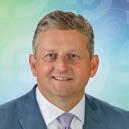

216-436-5818
setting?





I think it depends on the context. It is certainly not a new topic. When you look back at corporate disclosures, annual reports from public companies, you will see people putting out voluntary sustainability reports. So companies understood that somewhere out there stakeholders — and maybe that is their internal shareholders — felt this is the right thing to do, putting out these reports.
What I think has changed in the last two to ve years with this becoming more part of the vernacular likely has to do with the SEC and other governing bodies coming out and saying we want to standardize what is being reported.
Oh, and by the way, you’re going to be held accountable for what you put out there: how do you substantiate that goal or that report that you’ve put out there?
That is why you’re seeing a change with corporate organizations, because now they’re going to be held accountable.
` So what is the status of those enhanced disclosure requirements from the SEC? Do we know when they will go into e ect?








It’s hard to say exactly when they’re going to be e ective. That hasn’t been determined yet. There was some speculation it would be in Q4 of this year or Q1 of next year. But at the end of the day, the SEC got 14,000 comment letters, many with unique comments. I think the SEC is doing the right thing by listening to and evaluating them rst before coming out with a rule set.
I think the important thing is, regardless of when this comes out, something is








coming. So what we’re talking about with our clients is, waiting for the SEC to come out with its guidelines is not an e ective strategy or a good answer for clients. It is imperative for companies and clients to prepare. My saying is, fail to plan, plan to fail. Just like other accounting standards that come out, this is no di erent. And there are reporting requirements outside the U.S. for a lot of our global clients. We’re seeing European nations and the EU start to nalize their
rule sets. So, this is coming one way or another, and that is a big thing we try to reinforce with our clients.
` Is there anything that tends to worry or concern companies when it comes to complying with a heightened level of ESG reporting that’s around the corner?


At the end of the day, it’s data. This is data that is going to end up in reports led with SEC. So just like they report

12 | CRAIN’S CLEVELAND BUSINESS | DECEMBER 12, 2022 FOCUS | BOARDS AND CORPORATE GOVERNANCE All credit services are subject to credit approval. YourPremierBank.com Member FDIC
For over thirty years, the team at Sequoia Financial has been assisting clients craft personal financial plans that achieve their unique goals. Simply put, we’re here to help. SEQUOIA-FINANCIAL.COM | 440 473 1115 Investment advisory services offered through Sequoia Financial Advisors, LLC, an SEC-registered investment advisor. Registration as an investment advisor does not imply a certain level of skill or training. More information about Sequoia can be found here: https://adviserinfo.sec.gov/ SCAN THIS TO SCHEDULE A MEETING
Accordino
now on revenue metrics or stock comp or when they make an acquisition and have these disclosures with the SEC, they have to seek an external audit opinion when it comes to those numbers. These things are no di erent and will be subject to external audit procedures. That itself brings another level of scrutiny and worry for those who sign their names to those reports.
More particularly, when you think about what the SEC has talked about being required, it’s the thoughts around GHG (greenhouse gas) emissions. A lot of people — and this is talked about in the report — talk about scope 1 and scope 2 emissions and disclosures around those. People feel relatively comfortable that those are within their control. I think the big worry is scope 3, which are emissions they’re indirectly responsible for. Many are very worried about scope 3 disclosures, because those are a little
bit out of their hands. And frankly, scope 3 disclosures are ones where even our private company clients could be on the hook. For public companies, those scope 3s go up and down their supply chain. So if you’re a private company and your scope 1 or scope 2 emissions become scope 3 emissions of a pubic company, now, in order to do business with that public company as a private organization, you now need to be able to report scope 1s and scope 2s, and then prove those numbers are complete and accurate. So really, no one is o the hook here.
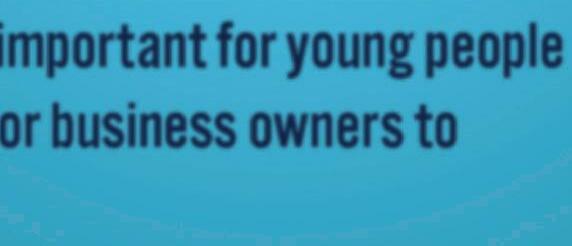

` This gets to a question of whether you really have to be as concerned with ESG reporting if you’re a private company versus a public one. Do you? 100% — at least, in a similar way. There may be some disclosures required of private companies. But more so for


private companies, it is a question of who they are doing business with. Maybe a private company is working with another private company that has to have that reporting in place for the public company that they deal with and their disclosures. And we are starting to see bigger organizations out there start to work terms into contracts that say you need to meet certain ESG metrics by this date or we have the right to terminate the contract. If you want to do business with the big tech companies out on the coasts, and you’re a private company in Northeast Ohio, there may come a time when you have to meet certain metrics, or it could upset your supply chain. So that’s where this becomes real for all companies, not just public companies. I think the other area where this starts to come into the lens for private companies is outside of disclosures when you think about something like talent and what people out there in the world want from their employers. Obviously, as you talk to di erent executives, their workforces and their employees tend to want to know what their companies are doing from an ESG perspective and want to work for organizations that are helping to do their part from an ESG perspective. So that is going to be an important factor aside from just being able to meet these public disclosures.
` With all that as a backdrop, can you touch on the key takeaways from the latest Deloitte report on ESG?






A lot of this ties into what we’ve discussed so far. First and foremost is that there is a need to address data and data preparedness. One of the biggest fears or risks is the availability and quality of the data. As a result of that, there is action that needs to be taken, whether that is implementing new technology — 99% said in our report they are going to have to go out and make some additional investment in tools and technology there — or looking at workforces and labor available to do this compiling. A lot of folks we surveyed say they have already developed a committee in-house to look at this, or that they will need to get external help to bring all this together. And then getting some assurance about the data they do have to disclose.
We are seeing that stakeholders and investors are being more in tune with what companies are doing around their ESG strategy and, again, they’re taking the talk and planning and turning it into action. I can’t say speci cally there’s always a 1:1 correlation that if you have a great ESG plan and you’re acting against it that all of a sudden your company is going to be valued higher. But, I certainly think there is
some linkage from external and internal stakeholders’ perspective that you are going to be much more successful in the future if you are tackling this head-on, putting your plan together and really starting to put some of that plan into action.



` Were the any surprises that came out of this ESG survey?





There was nothing that surprising. I would describe it as con rming. These changes are coming. And this is clearly more than a check-the-box exercise. Companies that spend the time now to put a plan together and that are critically thinking about what all this means for them and how they will do their part will be better o and more successful once the SEC does nalize their rulings or European nations nalize their rules.


` Any nal thoughts when it comes to companies and ESG?



This is not something where it behooves you to be a fast follower. This is not one you want to wait on. In the public accounting world, there are leaders and there are others who will wait and see what their competitors or others in their industry do rst before they take action. This is one where, as an organization, it is time to put pen to paper and get going on your plans for ESG.

DECEMBER 12, 2022 | CRAIN’S CLEVELAND BUSINESS | 13 FOCUS | BOARDS AND CORPORATE GOVERNANCE
I employ Y.O.U. youth “because I think it’s important for young people to be involved in their community. It’s also important for business owners to hire people from their local neighborhoods.”
Galadriel Olson
Summer Jobs Employer
Invest today in Northeast Ohio’s future workforce • youthopportunities.org
Owner of Lakewood Art Supply
GETTY IMAGES/ISTOCK PHOTO
Populist House Republicans pick ght with business over ‘woke capitalism’
BY BLOOMBERG








Republicans and their longtime corporate allies are going through a messy breakup as companies’ equality and climate goals run headlong into a GOP movement emphasizing social and cultural issues.
The ensuing drama will unfold over the next two years in the U.S. House, where the incoming GOP majority plans to pressure compa-
nies on immigration, equality and climate change stances that are now being assailed by key Republicans as “woke capitalism.”


Most directly in the GOP crosshairs is the U.S. Chamber of Commerce, which is under pressure from likely House Speaker Kevin McCarthy to replace its leadership after the nation’s biggest business lobby backed some Democratic candidates.
As the conflict simmers, the Cali-












fornia Republican and his top lieutenant, Steve Scalise, have refused to meet with Chamber representatives, according to a person familiar with their thinking. And rank-andfile Republicans are largely disregarding the once-influential “key vote alerts” the Chamber distributes, a former senior Republican aide said.
The confrontation has spread beyond Washington, with Florida Gov. Ron DeSantis building a na-
tional brand and possible 2024 presidential campaign on opposition to corporate environment, sustainability and governance investing policies. He has singled out PayPal Holdings Inc. in his battle against ESG and punished Walt Disney Co., which operates its Walt Disney World theme park near Orlando, after it criticized a law limiting school instruction about gender identity and sexual orientation.

Divisions between populist Republicans and big business are rooted in President Donald Trump’s attacks on executives such as General Motors Co.’s CEO, Mary Barra, Merck & Co. chairman Kenneth C. Frazier and Amazon.com Inc.’s Je Bezos. When companies suspended cam-
paign donations after the Jan. 6 Capitol insurrection to Republicans who denied the result of the 2020 presidential election, the rift widened, even though many businesses have since resumed their giving.
With Trump mounting his third presidential campaign and DeSantis positioning himself as a potential rival, the discord between corporate interests and conservatives threatens to intensify.
Interviews with lawmakers, lobbyists and former congressional aides highlighted the growing tensions with a new crop of Republicans more focused on social and cultural issues than business priorities.
“All of those companies are going to have a hell of a time getting back into the good graces of Republicans,” said John Feehery, a veteran House Republican aide who is now a partner with the lobbying rm EFB Advocacy.
Corporations and their representatives in Washington are meeting with incoming Republicans, typically a friendly formality after an election. Yet some of the sessions aren’t going well this year, according to one lobbyist for a business association who asked not to be identi ed discussing private conservations.
e issue, this person said, is the incoming freshman class has deep-rooted opinions and little experience with trade policy, the debt limit or the policies surrounding ESG.

Changing faces
More than half of the Republicans who were in Congress in 2017 won’t be in o ce when the next Congress is seated in January. Some key allies of the business community, including Sen. Rob Portman of Ohio and the House Ways and Means Committee’s top Republican, Rep. Kevin Brady of Texas, are retiring.
Indiana Rep. Jim Banks, the head of the conservative Republican Study Committee who took o ce in 2017, characterized the split as a divorce and asserted that his party is much healthier now. Republicans, he added, can now focus on American workers and distance themselves from ESG e orts, which he called a “scam” that hurts America and helps China.
At the Chamber, the board has publicly backed president and CEO Suzanne Clark amid McCarthy’s private calls for her ouster for, among other things, the group’s endorsing more than a dozen Democrats in the midterm elections.
e feud, brewing for years over trade, immigration and other policy disagreements, quickly escalated days before the Nov. 8 elections when the Chamber backed Rep. Abigail Spanberger, a Virginia Democrat and a top Republican election target. A Chamber executive even appeared with Spanberger in her district, and another donated $1,000 to her campaign. She narrowly won re-election, helping limit the GOP’s midterm gains.
Clark, in a statement, struck a positive tone.
“We are optimistic that the new majority in the House will seize this opportunity to ght in ation and crime, rein in regulation and hold agencies accountable through oversight, and put our economic security front and center,” she said.
14 | CRAIN’S CLEVELAND BUSINESS | DECEMBER 12, 2022 FOCUS | BOARDS AND CORPORATE GOVERNANCE FOR YOU, OUR PURSUIT OF EXCELLENCE IS NEVER ENDING.
Let us
you
or
Member FDIC. © 2022 Northern Trust Corporation. INVESTING | BANKING | TRUST & ESTATE SERVICES | WEALTH PLANNING | FAMILY OFFICE 200 Public Square, Suite 3200, Cleveland BEST PRIVATE BANK BEST PRIVATE BANK BEST PRIVATE BANK FOR FAMILY OFFICES — GLOBAL FOR INNOVATION — GLOBAL
Financial Times Group, 2022
Advice that builds on success. Service and technology that never stop getting better. Every day we pursue excellence with intent and purpose to be our clients’ most trusted advisor.
help
realize the full potential of your wealth, call Michael Cogan, 216-357-2439
visit northerntrust.com/cleveland
U.S.
See ‘WOKE’ on Page 35
NORTHEAST OHIO’S
FASTEST GROWING COMPANIES
WEATHERHEAD 100
Fuzion Sports
Powdermet, Inc.
Roofsmith Restoration, Inc.
Calyx, LLC
reLink Medical
Textbook Painting
Inforce Technologies
Sgt Clean Car Wash
Carnegie Investment Counsel

Marcum Wealth
Rent A Daughter Senior Care Services
Great Lakes Fasteners, Inc.
Direct Recruiters, Inc.
Banyan Technology
Greenspace Construction Services, LLC
MAI Capital Management, LLC
Apex Dermatology and Skin Surgery Center
FIT Technologies
ON Partners
Crescendo Commercial Realty, LLC
Sweet Kiddles
Midwest Home Care LTD
Hileman Group
INSIGHT2PROFIT
ConnectedHR
Repair Authority
Crimcheck Technologies
Global Transport, Inc.
Sky Quest
Re/Max Haven Property Management
ChoiceLocal
Colliers
Sequoia Financial Group, L.L.C.
Enterprise Door & Supply MediQuant, LLC
Futuri
Incept QualityIP Consolidus LLC
Exacta Land Surveyors, LLC
Ancora
Payroll4Construction.com
Molding Dynamics, Inc.
Digital Print Solutions
AtNetPlus
AQUA DOC Lake & Pond
Management
Fire-Dex
Carver Financial Services
Onpoint Interiors
Simplex-IT
LDA architects
Ashton Solutions
Star sh Computer Radcom, Inc.
Rakesh Ranjan MD & Associates Inc.

Laketec
Simpli ed Facilities Group, Inc.
Compass Self Storage Request A Test
Premier Development Partners
Lazorpoint Grants Plus Etactics Inc.
True Hire
Inner Circle Advisors
Legacy Roo ng Services WTWH Media
In nium Wall Systems, Inc.
Corrigan Krause
Handy Rents | Aladdin Rents
Bialosky Cleveland
Corporate Technologies Group, Inc.
Technical Assurance, Inc.
JCI Contractors
Brookes & Henderson Building Co., LLC
WHS Engineering Inc.
Five Lakes Dental Practice Solutions
T&D Fabricating, Inc.
SC Fastening Systems LLC.
Foundation Software
Allegro Real Estate Brokers & Advisors
World Synergy Enterprises Perspectus
The SpyGlass Group
North American Coating Laboratories
PureButtons.com
ThenDesign Architecture (TDA)
TITLE SPONSOR
UPSTARTS
Even Mix™
TEN 10 DESIGN
iiot world llc
WAN Dynamics, Inc. Muse.
M Genio Inc.
XCHANGE
Kiwi Creative Woodside Health, LLC
Mortach Financial Services Inc.
True Wealth Design, LLC the telos institute
CleanLife MOD
Ciresi & Morek
TinyCircuits
Wave Strategy
IRA Plan Partners Essentialware - Global AC Wellman
Jennasis & Associates, LLC
DMS Management Solutions
River Rock Advisors
42connect Planned Financial Services E. A. Loxley & Associates
US FREIGHT, LLC
Everest Land Title Agency Ltd. Standout Stickers
Ralston Instruments, LLC
FORM
Intech Computer Solutions

CENTURIONS
CrossCountry Mortgage, LLC Crawford United Corporation Echo Health Inc
MarshBerry Park Place Technologies Union Home Mortgage GEMCORE
Budget Dumpster
Nations Lending Corporation NOMS Healthcare
Garland Industries, Inc.
Jarrett Logistics Systems
TalentLaunch
The Federal Metal Company Mars Electric Co. Peoples Services, Inc.
SPONSORED CONTENT
MEDIA SPONSOR SAPHIRE SPONSOR PEARL SPONSOR
This advertising-supported section/feature is produced by Crain’s Content Studio-Cleveland, the marketing storytelling arm of Crain’s Cleveland Business. The Crain’s Cleveland Business newsroom is not involved in creating Crain’s Content Studio content.
























































































We are proud to support the Weatherhead School of Management and its
prepare professionals
marketplace
to all Weatherhead 100 winners! www.ciresiandmorek.com Thank you to Case Western Reserve University for this recogntion.
are
to announce that
Partners
our firm. NEO’S FASTEST GROWING COMPANIES W2
categories Inside • Weatherhead 100 winners are recognized for achieving the highest recorded growth in net sales over the past ve years — from at least $100,000 to $1 million. • Weatherhead 100 Upstarts are categorized as fast-growing companies with 15 or fewer employees and/or net sales of less than $5 million over the last year. • Weatherhead 100 Centurions are noted for their rapid growth and qualify for generating at least $100 million in net sales over the last year. BUSINESS PROFILES Fuzion W4 Star sh Computer W6 Even Mix W8 IIoT World, LLC W10 Cross Country Mortgage W12 Mars Electric W14 THE LISTS Weatherhead 100 winners W16 Weatherhead 100 Centurion winners W18 Weatherhead 100 Upstart winners W19 This advertising-supported section/feature is produced by Crain’s Content Studio-Cleveland, the marketing storytelling arm of Crain’s Cleveland Business. The Crain’s Cleveland Business newsroom is not involved in creating Crain’s Content Studio content.
FrantzWard.com
mission to
for the
of the future. Congratulations
Robert Ciresi & Mark Morek
proud
Benjamin Evans and Richard Crew have
become
of
Award
Shaping the next generation of Cleveland’s titans of industry
How the Weatherhead School of Management plans to evolve its mission in 2023 and beyond
Cleveland has a long, rich history of entrepreneurship across multiple industries— starting with the automotive and energy companies that made the region a global powerhouse in the early 20th century and leading up to the innovative healthcare and tech companies changing the world in the present day. ese companies succeeded not only due to talent and ingenuity, but because they saw the vast potential in the region’s people and ideas.
Presented by the Weatherhead School of Management at Case Western Reserve University, e Weatherhead 100 program honors this inventive, big-thinking spirit. Now in its 34th year, the program recognizes fastgrowing for-pro t companies that started in Northeast Ohio — and have chosen to stay put and grow here in the region. e criteria for this year’s winners takes into account net sales from between 2017 to 2021, with the requirement being an increase from $100,000 to at least $1 million in net sales during that timeframe. Companies also couldn’t have been a franchise or subsidiary of another company, or been sold, between 2017 and 2021.
To ensure the Weatherhead 100 program acknowledges the diverse scope of the Northeast Ohio entrepreneurial scene, the awards also honor two other categories of companies.
Weatherhead 100 Upstarts have fewer than 15 employees and net sales of less than $5 million in the last year, while Weatherhead 100 Centurions boast more than $100 million net sales in the previous 12 months.
“For us, it starts with recognizing and honoring the companies that are powering the region via the fastest growth within their individual peer group,” said Andrew Medvedev, interim co-dean of the Weatherhead School of Management and a managing director and member of the Investment Committee of Morgan Stanley Infrastructure Partners. “It’s a chance for us to get to know newer companies. It’s a chance for us to celebrate the leaders in the region. And it’s a chance for us to stay ever closer to the community, and to continue learning about what’s currently top of mind for business leaders.”
ese goals dovetail with the priorities of the Weatherhead School of Management, including
the goal of presenting a curriculum rooted in real-world scenarios and ever-evolving challenges facing modern business executives. “We solve the most urgent problems of management,” Medvedev said. “And we can do that because we are hyper-connected to our external stakeholders. We engage with them as advisors, teachers, students and collaborators. Weatherhead ultimately acts as the intellectual hub of the region’s corporate community.”
J.B. Silvers, PhD, interim co-dean and professor of health care nance and banking and nance at the Weatherhead School of Management, added that Weatherhead faculty and sta are in close contact with the region’s major industries in health care and beyond.
“We want to make courses applicable to real life, informed by ideas and involvement from the major stakeholders,” he said.
ese ongoing discussions also inform both the content and approach to coursework and career guidance—but also give the university broader appeal.
“I’ve always thought of the framing of what we do as lifelong learning,” Silvers said.
For example, he notes that Weatherhead’s research-heavy curriculum draws a wide range of students and that classes in the MBA program look at leadership from di erent perspectives: as an individual, as an organization and as a society.
“We’re answering the question, ‘Can we make an impact on the way the world works?’” he said.
“We’re hoping that we can increase a person’s ability to do a better job.”
At the end of the day, the Weatherhead School of Management is looking to produce the kind of business founders and executives that populate the Weatherhead 100. “We want to serve the broader corporate community, not just the larger companies,” Medvedev said. “A business school should be celebrating the achievements of the region. And at Weatherhead, we’re proud to be supporting the Weatherhead 100 as a forum to celebrate the fastest growing companies of Northeast Ohio.”
Crawford United’s approach to acquisition is spurring growth while keeping manufacturing jobs in the US
 By Doug Shaffer, Crain’s Content Studio-Cleveland
By Doug Shaffer, Crain’s Content Studio-Cleveland
In today’s business world, it’s common for companies to grow by buying out and assimilating smaller organizations. Although the acquisition process typically involves integrating teams, systems and processes – that isn’t always the case. For the past six years, Crawford United has shown that an acquisition doesn’t need to mean change — it can simply mean growth.
“The companies we acquire are the best in their respective industries, and they have already perfected the manufacturing process,” said Crawford United CEO Brian Powers. “We don’t want to disrupt their business operations by forcing them to integrate into a different system or platform. Instead, we support the organizations through other means such as leadership development and capital investment.”
100-year-old company with a fresh outlook on the future
It’s common for companies that have been around for decades to fall into the trap of becoming complacent about where the organization is. However, Crawford United has made it a company-wide goal to continue to focus on innovation, growth, and evolving its internal culture, with many of the most signi cant changes occurring over the last six years.
Since 2016, chairman Edward Crawford (former U.S. ambassador to Ireland) and Powers have worked together to reimagine what the 112-year-old company could be. Over the past six years, the organization has been able to achieve the following:
 Powers
Powers
• Rebrand the company from Hickock Inc to Crawford United (2019)
• Increased the stock price from $1.40 in 2016 to a high of $31.50 in 2022
• Drove revenue growth from $5 million to $125 million
With the leadership team focused on the future, it’s looking as though Crawford United isn’t nished exceeding expectations yet.
Acquisition without integration
One of the largest drivers of success for Crawford United has been its proprietary approach to acquiring other manufacturing companies. Instead of integrating these new asset companies, the leadership team of Crawford United has decided to let the organizations run autonomously.
Each location has its own GM and management team responsible for the business’s operations. By allowing each brand to function on its own systems, it isn’t necessary to force new employees to migrate to new CRM or shipping software.
This approach has made it easy for team members to continue providing customers with exceptional service.
As of 2022, the following companies have been added to the Crawford United family of brands:
• Air Enterprises • CAD Enterprises • Data Genomix
A promise to keep jobs in the US
As impressive as the recent growth of Crawford United has been, the company’s leaders are more grati ed to be a part of the movement to maintain manufacturing jobs in the United States. To that end, Crawford and Powers have

been adamant that the company’s growth isn’t possible without the team members who make Crawford United what it is.
In any business, but especially in manufacturing, you have to have good people to win,” Crawford said. “And we have great people to lead this company into the future.

SPONSORED CONTENT W3
• Federal Hose • Global-Tek Manufacturing • Komtek Forge • MPI Marine Hose • Reverso • Separ Filter
Brian
Edward Crawford
SPONSORED BY
Custom sporting goods recreate
‘that Christmas morning feel’
By Vince Guerrieri Crain’s Content Studio-Cleveland Weatherhead 100
e idea for Fuzion Sports developed around a camp re at a platform tennis tournament in 2017.
Jody Herzog, who with his wife owned four Fleet Feet franchises in the Cleveland area, was asked by a country club tennis pro for help in setting up a pro shop. Golf pro shops are typically part of the club, Herzog explained – the pro shop for tennis and other “paddle sports” is usually run by the pro, who typically makes money on lessons, not merchandise.
It didn’t take long to develop a business plan, and later that year, a pilot program launched, selling gear at a total of eight di erent clubs in Northeast Ohio. e following year, Herzog was able to leverage his retail contacts from Fleet Feet and started taking on other market segments. “We started growing like crazy,” he
said – enough that they moved from their initial 1,800-square foot facility in Beachwood to a 7,500-square-foot space in 2019. And the growth hasn’t stopped yet.
“We’re in a hundred-plus clubs, from Colorado to Connecticut,” he said. “We have a great corporate base, and
have spirit gear and event gear.”
Pro shop and corporate business are their two biggest sectors, while sports uniforms and events are smaller. But Herzog said they’re all meaningful, and they all intersect.
“We just did a whole hockey club in Chicago,” Herzog said. “It was a good experience for them, and we got some corporate business out of it. Our process and our attention to customer
experience is where I think we get the most grown and the most wins.”
Herzog likes to tout what he calls the “stoke factor,” the giddiness that comes with opening a new item. “We like to create that Christmas morning feel,” he said.
It worked for Dave Payne, who knew Herzog through a local entrepreneurs
group. His work with Fuzion started with gift packages for employees at his company, Payne and Tomkins Renovation, when they couldn’t have a Christmas party due to COVID-19.
“ ey curated the package and all I had to do was approve it,” Payne said.
Payne then enlisted Fuzion when was doing a rebrand of his company –everything from letterhead and business cards to signs and registration lings with the Ohio Department of State.
“It was a huge e ort,” he said.
Some of it, Payne said, was like pulling teeth. Getting new apparel and other gear from Fuzion was not. A website was set up for employees to order new apparel, and like Herzog said, everything came about two weeks later – individually wrapped for that “stoke factor.”
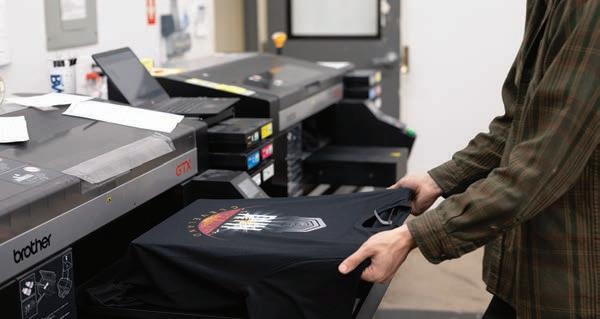
“Fuzion took something that took a
A collaborative culture and a focus on creating impact helps INSIGHT2PROFIT expand
 By Annie Zaleski, Crain’s Content Studio-Cleveland
By Annie Zaleski, Crain’s Content Studio-Cleveland
Since joining INSIGHT2PROFIT in February 2022, CEO Carl Will has focused on building a talented team to expand the company’s offerings and addressable market. Today, it is one of the largest and fastest-growing companies in the price, sales force effectiveness and product mix management consulting space. Luckily, when Will arrived at INSIGHT2PROFIT — which has of ces in Beachwood, Columbus, and Chicago — he found the company’s core values were ingrained in its culture. These core values include a strong desire to give back to local and global communities, a key part of a concept INSIGHT describes as “The Ripple Effect.”

INSIGHT2PROFIT is a nine-time consecutive winner of the Weatherhead 100 awards and employs more than 250 team members.
“The Ripple Effect is the driving force behind our business model. We believe that focusing on value creation for our clients creates a ripple that can positively impact our clients, our teams, and our communities,” Will said.
INSIGHT role models the positive change it wants to create by scheduling an annual day of community service for the entire team and funding wells in Uganda as a partner of the nonpro t Drop in the Bucket.
“We’re funding wells with company dollars and team member contributions,” Will said. “What you see is this almost literal ripple effect of what happens when you put drinking water into a community surrounded by a school — each well might be able to provide 2000 people with drinking water.”
“For INSIGHT2PROFIT team members, seeing this impact rst-hand shows them the power of possibility. In turn, this helps team members discover strengths they didn’t know they had,” said Lisa Claussen-Adams, chief people of cer.
INSIGHT2PROFIT, which develops and delivers data-driven pricing strategies and tailored software solutions to solve clients’ unique pro tability challenges, also empowers team members by avoiding the command-and-control management style.
“It would be wildly uninteresting for me and incredibly stressful if I had to have all the answers,” Will said.
INSIGHT believes this so much that in August 2021, it rolled out a long-term incentive program to every person in the organization, ensuring that all will bene t from the company’s success.
“When you pair this with the idea that team members are committed to working together to build things the right way, that’s powerful,” Will added. “You’ll nd folks that want to plant
roots—and build parts of your business that were never there before.”
Indeed, Will is committed to cultivating a business culture where team members have a fun and professionally rewarding work environment with growth opportunities, a diverse and talented team, and measurable results.
“People want to be a part of something,” he said. “And they want to have all aspects of their lives be ful lled and for work to be a positive part of that. That’s a highly attractive aspect of our business — core to who we are.”

NEO’S FASTEST GROWING COMPANIES W4
we
No. 1 Fuzion Sports Beachwood Founded: 2017 Sales growth: 995.08% Number of employees: 18
section/feature is produced
marketing
arm of Crain’s Cleveland Business. The Crain’s Cleveland Business newsroom is not involved in creating Crain’s Content
content.
This advertising-supported
by Crain’s Content Studio-Cleveland, the
storytelling
Studio
SPONSORED BY
reasonable amount of e ort and could be frustrating and made it so easy,” he said. “It was so simple and so much less work for us. I said we’re never doing anything else again.”
Fuzion has high-end, quality apparel, from Spyder shirts to Yeti coolers and cups. “ e access to brands sets us apart,” Herzog said. And there’s no order too small, or too strange – Herzog said his company once put a logo on 50 pairs of boxer shorts for a wedding.

“If people call and want six of something, we’ll take the order,” Herzon said. “We like to not set minimums. We like to help our customers out. I have the belief if you help someone get something done, they’re going to remember and they’re going to come back.”
Fuzion also has the equipment to do just about anything. ere are 14 embroidery heads – “We’re getting 18 more,” Herzog said – a UV printer






for cups and golf balls and a digital printer, which prints multiple colors at once. By comparison, screen printing, Herzog said, prints one color at a time.


e company has a total of 18 employees, all but two in Beachwood. Its club business is run out of Connecticut and it’s trying to break into the equestrian market with an employee in Florida. e most amazing part? Herzog said they’ve done what they’ve done without any real marketing or advertising.






“ is is all word of mouth, on our charm and good looks,” he said. “Our goal is creating a customer experience. ere’s always a monetary goal, but if you do all the little things, the money comes. It’s a product of the hard work.”

QualityIP.com | 844-KNOWS-IT 24/7 Local Support Full-Service IT, When & where you need us! Enterprisedoor.com 440-942-3478 Hollow Metal Doors and Frames, Wood Doors, Hardware SPONSORED CONTENT W5
Star sh Computer remains focused on client success
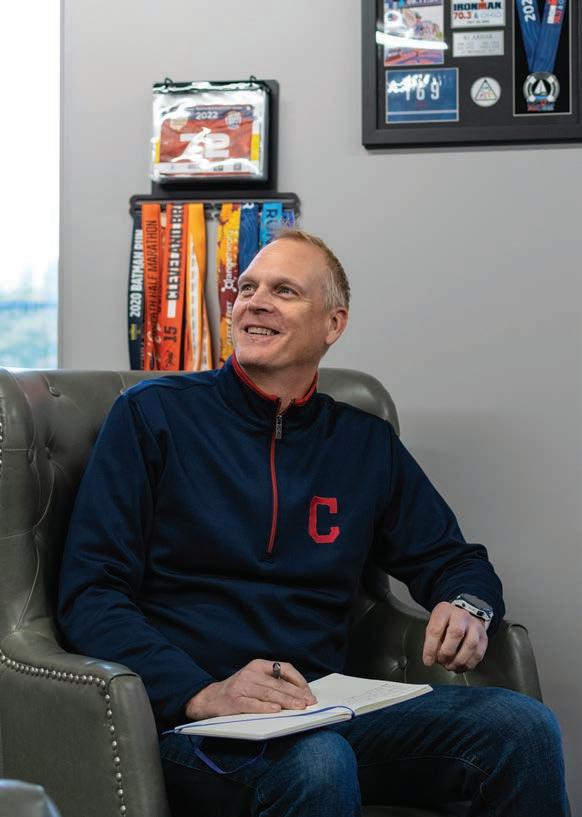 By Vince Guerrieri Crain’s Content Studio-Cleveland
By Vince Guerrieri Crain’s Content Studio-Cleveland

It was a markedly different landscape when the Eaton Family Credit Union became a client of Starfish more than 20 years ago.
There was no online banking. There were no banking apps. In fact, there were no smartphones, so there were no apps of any type at that point. There was dial-in voice banking – a technology that’s now outdated and virtually extinct.

The credit union, which serves employees and retirees of the Eaton Corp., hired the North Olmsted-based company for managed services, namely network support, computer support and data processing. Today, it’s one of dozens of financial institutions that rely on Starfish not just for tech support but cybersecurity – one of the growing concerns of any company that handles sensitive personal and financial data.


“A lot of credit union CEOs get together and talk about things,” said credit union CEO Mike Losneck. “I’ve always talked about Starfish as a solution.”


President RJ Arhar said that


Starfish can provide a variety of services, from tech support to the implementation and administration of cybersecurity procedures – no small task in an era where ransomware is on the rise and cyberattack risks are a question of when they’ll happen, not if.
“When I rst started the company, three-quarters of the technology we use today didn’t even exist,” Arhar said. “ ere are so many more aspects of IT now than there were 20 years ago. Twenty years ago, you could get anyone with an IT background or training to set up a server. And then you could make sure that there was an internet connection. Now, there are concerns about cybersecurity and remote work. Complexities

Centurion Winner! nomshealthcare.com · 419.626.6161 260+ Providers | 28 Specialties | 160 Locations & Growing! Delivering innovative freight management technology that connects the supply chain at home and throughout North America for Less-Than-Truckload, Truckload, Local Carrier, and Parcel shipping. Banyan Technology is proud to consistently be recognized in the Weatherhead 100 844.309.3911 info@banyantechnology.com www.banyantechnology.com
NEO’S FASTEST GROWING COMPANIES W6
Weatherhead 100 No. 53 Star sh Computer North Olmsted Founded: 1996 Sales growth: 79.43% Number of employees: 20
This advertising-supported section/feature is produced by Crain’s Content Studio-Cleveland, the marketing storytelling arm of Crain’s Cleveland Business. The Crain’s Cleveland Business newsroom is not involved in creating Crain’s Content Studio content.
can bring out foundational issues.”







As computer issues have become more complicated for companies, many look to outsource their IT services.





“It’s become a pain point for some companies,” Arhar said. “Companies are spending more time on IT than actually running their business.”
Arhar said Star sh tries to align its customers’ needs with its own best practices. And that’s created an environment where everyone prospers.

“As we’ve grown, they’ve also grown,” Losneck said. “IT has become more sophisticated and security focused, and Star sh has stayed on top of that.”

Arhar said the biggest growth for the company has come in the nancial services industry. He said clients choose them for their knowledge and for their ability to deliver products that satisfy audit requirements, be they internal or for state or federal oversight.

“We’re a highly regulated industry, so our regulators have become more focused on making sure our IT is secure and our data is secure,” Losneck said. “ ey’re doing



vulnerability testing to make sure data doesn’t get compromised.
“Security is our primary focus on everything we do IT related now,” he added. “We’re spending more now on security than we were spending on IT 10 years ago. We have a whole component built into our system now to address ransomware. It can be up and running within 30 minutes with our secure data. Even if we weren’t doing the right thing, our regulators would be in to make sure we’re doing the right thing.”

e pandemic has accelerated some trends in the industry, Arhar said. Remote work was proceeding slowly until COVID-19 hit in 2020 – as was automation.
“When you visit a website, a lot of customer chats at least start with AI,” Arhar said. “You can now rent tools like that to run or help run your business. Imagine you can analyze data like Amazon does as a small company in Northeast Ohio. You can be your own Amazon, and I’m really excited to bring that to our customers.”

SPONSORED CONTENT W7
Bringing together strengths to spur innovation
By Laura Hennigan Crain’s Content Studio-Cleveland
When Phil Rankin bought three small companies in 2010, he had an inkling of an idea for an innovative new product that could be developed with the help of some actual rocket science. Even Mix, of Columbia Station, has revolutionized the mixing eld by creating 3D products that are more e cient, cost-e ective and consistent than any other competitor on the market.

Traditional industrial electric mixers, used to mix everything from paint to shampoo, are heavy, weighing anywhere from 50 to 150 pounds and making operators’ jobs even more physically demanding. ey are also
Upstart
No. 1
Even Mix
Columbia Station
Founded: 2013
growth: 993.06%
generally made with older, outdated technology, which often leads to equipment that is cumbersome and more likely to break down. Even Mix sought to transform the industry and
develop a brand-new kind of mixing blade.
Rankin, who used to work in aerospace, partnered with former NASA launch engineer Dan Shramo to utilize the assets of the three original businesses and design pump technology into variable pitch blades, bringing modernized mixing techniques to in-drum liquids of all sizes.
Two stamping companies were acquired: Total Automation was purchased for equipment and the original Even Mix concept, while LaGanke Stamping was secured for the customer base it o ered. e third business, American Assembly Tools, is responsible for manufacturing the air motor

The art of building homes at the highest level
 By Vince Guerrieri, Crain’s Content Studio-Cleveland
By Vince Guerrieri, Crain’s Content Studio-Cleveland
When Chris Brookes and Bill Henderson founded Brookes & Henderson Building Co. in 2012, they were starting out on what they thought was simply the next step in a career building distinctive homes.
homeowners – and quite frankly, the homes, themselves, too – and allow them to bene t from our knowledge of the property for years to come,” Henderson said.


Brookes & Henderson are, perhaps, best known for the construction of new homes of all sizes, even in excess of 20,000 square feet – some of which have graced the pages of publications like Architectural Digest. However, they stress that the size of a project is not as important as the desire to build at the highest levels of quality and craftsmanship. ey even take on projects for new additions and interior redesigns, as well.
ey’d worked in contracting for years – and spent more than a decade working side-by-side at the same company. But it didn’t take long before their reputation for problem-solving and attention to detail spread among top architects and designers. And they soon landed a project that would call upon their skills like never before.
“We were presented with some truly new and interesting challenges – exciting designs and ideas that leveraged every bit of our previous knowledge and experience,” Brookes said. “We dug in and came up great solutions. And the entire process and the teamwork involved was so satisfying that it really made us look at our business in a whole new way. So, we took a step back and said, ‘How can we apply this new approach we’ve developed going forward?’”
As they worked to codify that experience into an e ective and repeatable process, their growth continued – judiciously. Today, the company employs 32 talented and dedicated people and has broadened its scope to include postconstruction services for high-end homeowners – including repair, scheduled maintenance, and other bespoke services. “We want to continue our relationship with
From their base in Chagrin Falls, they’ve worked throughout the Cleveland area and branched into Akron and Huron, too. And they pride themselves on meeting exacting standards and making the impossible possible. “We tend to attract clients who are looking for creativity and unconventional things,” Henderson said. “To us, success is being able to deliver what the client and architect envision. We encourage them to be as creative as possible because we like new challenges and new solutions – whatever they dream up, we believe we can build it.” He added, “Our appreciation of creativity is why we’re able to attract and retain such good people, as well.”
Brookes & Henderson don’t build on spec. ey don’t do design-build, either. ey work with renowned architects, landscape architects and designers – not just the best in Ohio, best in the country, as well. And they also maintain a carefully curated network of trusted subcontractors and artisans to make sure they have the right people for anything a project brings their way.
“We build a team unique to each project, give them what they need to ourish, and lead them to create a nished, tangible project,” Henderson said. “We’ve been with some of our trades for more than 20 years, and there’s a reason for that.”
“ ey’ve been on the path with us,” Brookes added. “ ey’ve experienced our growth, and they’ve grown with us.”
“Our employees are the key to our success and continued growth. We work hard to foster a strong and sustainable culture,” Brookes said.
advertising-supported section/feature is produced
“I know that’s a buzzword, but we really try to make it a place people want to be, a place where they’re happy to work.”
Crain’s Cleveland Business. The Crain’s Cleveland Business newsroom is not involved in
NEO’S FASTEST GROWING COMPANIES W8
Sales
Number of employees: 7
This
by Crain’s Content Studio-Cleveland, the marketing storytelling arm of
creating Crain’s Content Studio content.
SPONSORED BY
Chris Brookes
Bill Henderson
“Our employees are the key to our success and continued growth.”
— Chris Brookes, co-founder
Rowdy Meadow: New construction, hardscaping, pool, art installations Brookes & Henderson were tasked with coordinating a team of individuals and companies from around the world, gathering specialized materials, and harnessing rare talents to bring this visionary project to fruition. With an eye toward the owners’ plans for the property, we were entrusted with constructing everything to distinctive quality standards. This property was featured in the January 2020 issue of Architectural Digest.
After much internal testing, Even Mix began selling products in 2015. Sales lagged at rst, with Shramo sharing, “when you develop a new product, acceptance is slow. But once people see what we have to o er, they are excited to use it.”
What makes Even Mix stand out is the patented blade, which is made of incredibly lightweight materials and engineered with a variable pitch.
“With the manufacturing available in the Midwest, we can outsource that piece and focus our time on designing, assembling and marketing our products,” Ranking said.
It wasn’t long before word began getting around and enthusiasm for Even Mix products began to grow. e company has managed to double sales every year since launching. “It’s important to us to celebrate our employees and our growth,” said Rankin. “We celebrate every year when we hit last year’s full sales. We try to do that earlier and earlier, and in 2022 we hit the previous year’s sales on June 10th.”
e Covid pandemic didn’t slow things down, but rather incited a quick pivot brought about by a customer inquiry.
“ ere was a gentleman in Dubai who needed a machine that could help

him mix hand sanitizer in small batches. I knew that was a great idea, so that night we modi ed our SEO strategy to capture this trend and ended up selling a signi cant amount of mixers to people for hand sanitizer,” said Rankin. “We get a lot of feedback like that from customers, which helps us nd new markets and improve our products.”
Even Mix is continuing to expand its reach, with yearly export sales totaling around 10% and new customer relationships being developed across Canada, South America and Mexico.

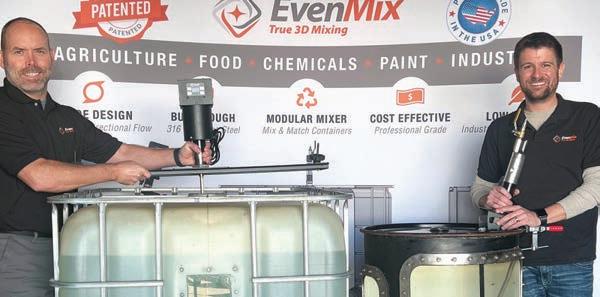

“ e State of Ohio Economic Development Program has been a huge help to us,’’ said Rankin. “ ey o er great assistance to small businesses and help us nd new distributors so we can expand our exports.

“I think what’s unique about us is that we’re designing products that are bene cial to everybody,” he added.


“We’ve got a great group of folks who have helped us grow, and I think we’re really just getting started.”

LEAVE PAYMENT PROBLEMS in the Past Contact us to learn more. echohealthinc.com | 440.835.3511 CONNECT | COMPLY | SIMPLIFY Get Payments Simplified® ECHO® is an insurance technology company focused on removing complexity and costs from payment processing. We save our customers over $1 billion annually through comprehensive management of the claim payment process and provide access to the ECHO Payment Network, the industry’s largest network of insurers and service providers. Proprietary ECHO technology keeps policyholders and service providers happy by ensuring payments are sent in the manner they prefer. ECHO settles over 500 million claims and distributes over $100 billion in payments securely across the ECHO Payment Network annually. SPONSORED CONTENT W9 technology used for the mixer motors. “We used fundamental NASA aerospace design techniques to make these products. In space, light weight is very important, so we took those capabilities and parameters in our product development,” said Shramo. “We developed 3-dimensional mixing and there’s no other blade on the market that does that. We combined that with modern drive technology that had never been used in this industry and that has made a huge di erence.”
Collaboration, knowledge and connections on the cutting edge of industrial technology
 By Laura Hennigan Crain’s Content Studio-Cleveland
By Laura Hennigan Crain’s Content Studio-Cleveland
While it may be based in the small Ohio suburb of Westlake, IIoT World commands a strong international presence. The digital media outlet was co-founded by Lucian Fogoros and Dr. Carolina Rudinschi in 2016 with a goal of combining journalistic coverage with data analysis to expose the stories, players, trends and innovations that shape the IIoT (Industrial Internet of Things).

Pulling from his professional background in software and global marketing, Fogoros noticed that there was a lack of knowledge at the corporate executive level about what exactly Industry 4.0 and Industrial IoT was.


“Our mission was to fill that gap and educate the C-level decision makers. Over five years we built a global community of 300,000 people, most of whom are in

decision maker roles,” said Fogoros.
IIoT World targets six main industries: manufacturing, energy, ICS cybersecurity, smart cities, infrastructure and smart buildings. By leveraging technology, the company is able to offer clients strategic campaigns that allow them to connect with a large, worldwide community. IIoT World offers a wide variety of virtual

NEO’S FASTEST GROWING COMPANIES W10
LLC Westlake Founded: 2017 Sales growth: 562.16% Number of employees: 14
Upstart No. 3 IIoT World,
This advertising-supported section/feature is produced by Crain’s Content Studio-Cleveland, the marketing storytelling arm of Crain’s Cleveland Business. The Crain’s Cleveland Business newsroom is not involved in creating Crain’s Content Studio content.
conferences and summits, partner events, content creation and industrial IoT reports to help create a culture of innovation across the globe. In addition, they publish daily articles focused on the news and trends relating to IIoT.





“The education component is what makes us different,” Fogoros added. “We provide the right content for the right audience at the right time.”
The company was named the number one IIoT global influencer by Onalytica in 2020, and the content they put out consistently ranks in the top five spots, particularly the topics that center around topics like industrial IOT, smart manufacturing and predictive analytics.





Rudinschi, who has a background in digital journalism, believes that IIoT World stands out from its competitors thanks to its unique subscription-based model and crystal clear KPI’s (Key Performance Indicators).

“In addition to having laser focus in regards to the topics we cover, we also have a strong community and partner ecosystem, resulting in great engagement at our events,” Rudinschi said.
The company doesn’t follow a transactional, one-size-fits-all approach when working with customers, but rather treats the relationship as a partnership for 12 months. The year-long collaboration includes a combination of videos, events, speakers and interviews, each customized for the client. During that time, IIoT world is able to truly understand the needs of each customer, provide them with better data insights and ultimately increase their reach and awareness.
Over the past year, the company has been busy adding additional industry events and are now up to six per year, including the recent IIoT World Industrial




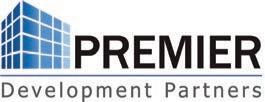

Metaverse Day, which took place in October. These online events bring in anywhere from 3,000 to 15,000 people, many of whom are considered C-level executives who want to learn more about industrial IoT topics.



“We have a mentality of thinking about which organizations we can partner with to tap into new audiences and communities. We want to stay six steps ahead through linear thinking, which can lead to exponential growth by reaching a global audience,” said Fogoros.
Looking ahead, IIoT World, which has a strong presence in North America and Europe, is seeking to increase partnerships in Latin America. In terms of future growth, Rudinschi said, “Our goals include continuing to grow the community and expand our reach within different manufacturing & Industrial communities. We also want to expand IIoT World’s team and partner ecosystem and increase visibility for IIoT World Days 2023.”








Park Place Technologies is honored to be included in the Weatherhead 100 and congratulates all of this year’s winners.
CONGRATULATIONS to all the 2022 winners! Northeast Ohio’s Premier Real Estate Developer Development | Construction | Tenant Finish | Property Management www.premierdevelop.com | 216.341.1200 | 5605 Granger Road, Suite 100 | Cleveland, OH 44131 SPONSORED CONTENT W11
ParkPlaceTechnologies.com
For CrossCountry Mortgage, local grit drives national growth
 By Brooke Bilyj Crain’s Content Studio-Cleveland Centurion
By Brooke Bilyj Crain’s Content Studio-Cleveland Centurion
Although CrossCountry Mortgage is the fth largest retail mortgage lender in the country and the largest in Ohio, it’s easy to forget how big the company is. at’s because it doesn’t act like a huge national corporation, but like a small, local company with the culture of a mom-and-pop shop.
“We have grown exponentially to cover the entire country,” said chief brand o cer Laura Soave. “Our branches are really connected to the communities they serve.”
Since founder and CEO Ron Leonhardt, Jr., opened a tiny downtown o ce in 2003 with a few friends and family members, CCM has expanded into more than 600 branches across all 50 states, employing more than 8,000 people. In Northeast Ohio alone, the
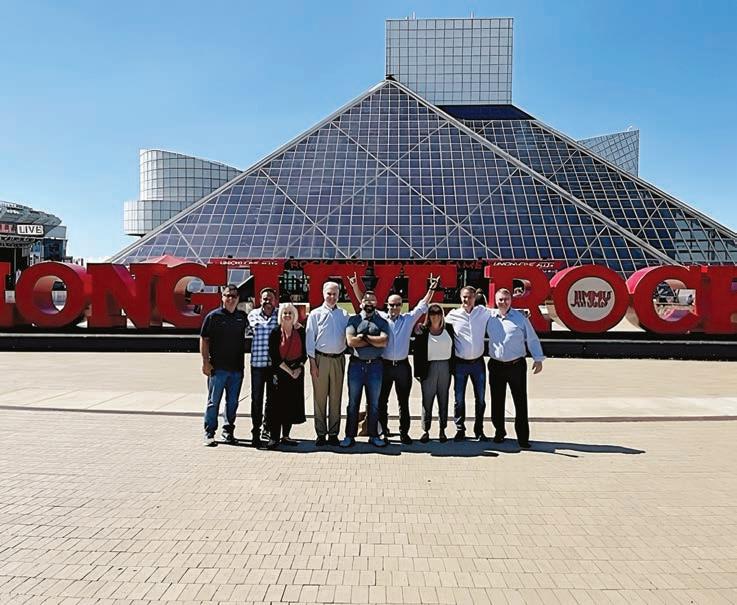
CrossCountry Mortgage
company operates more than 20 branches with over 1,100 employees.
Despite this rapid growth, the founder’s vision has not changed. As the company expands its product portfolio and its national reach, it remains dedicated to delivering the personalized service to make every mortgage feel like a win.
Bringing the traditional practice of land surveying into the 21st century
By Sara McCarthy, Crain’s Content Studio-Cleveland
What do George Washington, Thomas Jefferson and Cleveland-based Exacta all have in common? The practice of land surveying. New to the Weatherhead 100 rankings, Exacta Land Surveyors LLC has made a successful business out of bringing the time-honored profession of former presidents into the 21st century.

Land surveying is the practice of con rming property boundaries and is a critical step in the process of buying or building a new home or commercial property.
When starting the company nearly 30 years ago, Exacta’s founders focused on developing technology to bring greater ef ciency, reliability and speed to the surveying process, said chief nancial of cer Scott Bogard. The result is SurveySTARS, a cloud-based platform that enables the company to operate across multiple states, which is unusual in the industry given the requirement that surveyors be licensed in each state where they operate. In addition to running its own business on the platform, Exacta licenses SurveySTARS on a SaaS (software as a service) basis to dozens of other survey companies.
“This is a very local business,” Bogard said. “Our competition is generally the proverbial mom and pop who has one of ce and uses paper les.”
After receiving an order, Exacta’s research team gets to work searching public records and other databases to determine the boundaries of the plot of land in question. A crew member drives to the site, pulls up the research on his tablet, takes measurements
and uploads them to the platform. A licensed surveyor reviews the information and gives nal sign off, and the nal survey is sent to the client. Operating across six states and the District of Columbia, the company’s team of 450 employees ful lls more than 100,000 surveys and elevation certi cates a year.
In 2019, Charlotte, North Carolina-based investment rm Summit Park took a majority stake in the business, but Exacta remains based in Cleveland. Since then, the company has acquired four businesses and more than doubled its revenue, while opening a new headquarters in downtown’s Post Of ce Plaza building.
“The vision is to continue to grow to become the biggest and best land surveyor in the country in both residential and commercial ALTA,” Bogard said. “We’re focused on organic growth in the markets we’re in and growth through acquisition. This is a target-rich environment. There are a lot of smaller competitors with owners who are looking for exit strategies.”
“We are committed to being a great place to work and giving our clients an outstanding experience,” said CEO Hank Mullany. “We have a great team that brings our vision to life every day.”

Of course, the company’s rapid growth hasn’t come without bumps along the way. Before the acquisition by Summit Park, the company was more fragmented, with the different locations operating in their own ways.
“We spent the rst couple of years creating our common vision and culture, and developing a shared playbook that we can deploy across
various markets. By “systematizing what we do, we can scale well beyond the competition,” Bogard said.
“Fluctuations in the housing market are another challenge the company must navigate.” Bogard said. “Rising interest rates are a concern, but we’re diversi ed across a lot of different end markets and geographies. We’re con dent in our path forward and in our outstanding team to get us there.”
NEO’S FASTEST GROWING COMPANIES W12
No.
1
Brecksville Founded: 2003 Sales growth: 773.41% Number of employees: 8,000+
is not involved in creating
content.
This advertising-supported section/feature is produced by Crain’s Content Studio-Cleveland, the marketing storytelling arm of Crain’s Cleveland Business. The Crain’s Cleveland Business newsroom
Crain’s Content Studio
SPONSORED BY
Entrepreneurial spirit
Culture has been the key to CCM’s growth. Leonhardt continues to foster the same entrepreneurial spirit that built the company by encouraging employees to take ownership. In fact, Soave said, new recruits are often surprised by how much autonomy they have.



“Ron allows our branches to be entrepreneurs, so they get the support of a big national company, but they still get to run their business day-to-day,” she said. “We don’t get involved in how they manage their teams, but we do provide the tools, programs, technology, and marketing support they need.”
For example, the company recently launched a new intranet where employees can connect from coast to coast. is makes it easy for branch managers and loan o cers to ask questions and share best practices, tapping into knowledge and experience across the organization. Whether they need help managing leads or promoting one of CCM’s 120 loan products, the rest of the team is eager to o er advice.
“We have amazing branches, and we’re able to glean their best practices and share ideas,” Soave said. “It’s really awesome to see our loan o cers helping each other get better at their business.”
Cleveland renaissance
As a result of its rapid growth, CCM outgrew its corporate headquarters in Brecksville. So, in late 2018, Leonhardt began planning the company’s return to downtown Cleveland. e new headquarters have been slowly coming to life in four old, abandoned industrial buildings in the Superior Arts District.
e pandemic delayed the ongoing renovations, with the computer chip shortage impacting the timeline of electrical upgrades and technology integrations throughout the building. Soave said the company expects to receive the Certi cate of Occupancy by the end of October, and move into the new headquarters by the end of the year.
“It’s an inspirational building, with beautiful windows and big collaboration spaces,” she said. “We have amazing, state-of-the-art technology in the conference rooms so we can connect with our branches.”
e 168,000-square-foot campus will also feature a café, a fully equipped gym and a 12,000-square-foot training center that Soave said will “open up a lot of opportunities, both internally and externally,” through internships and co-op programs with local universities.
Giving back
Renovating historic buildings in the Superior Arts District wasn’t just about creating an inspiring place to work, though. It also gave CCM an opportunity to connect with the local community.
“We’re super excited about being part of the district’s transformation,” Soave said. “When we started renovations, we reached out to the local artist community to have them help us shine a light on that community.”
e company launched a yearlong mural competition called “Paint the District.” Each quarter, online voters select a local artist to receive a $1,500 award from CCM. At the end of the year, all four nalists will compete for the $5,000 grand prize and the installation of their work in the new headquarters.
e competition is just one example of CCM’s commitment to supporting the local communities it serves. Earlier this year, the company launched a 501(c)(3) foundation, CCM Cares, to formalize its philanthropic e orts, which help support women, children, and veterans.

“We want to do everything we can for our community,” Soave said.
“We try to support, not just the Northeast Ohio community, but our communities throughout the country.”
Call us at 440.334.6860. Or, visit www.echohealthinc.com. ECHO Health, Inc. | 810 Sharon Drive | Westlake, Ohio 44145 CONNECT | COMPLY | SIMPLIFY Get Payments Simplified® Proprietary technology from ECHO® saves our customers over $1 billion annually – on more than $100 billion in payments and 500+ million claims. Payments are sent securely to you through the ECHO Payment network – in the way you prefer. LEAVE PAYMENTPROBLEMS in the Past www.mai.capital CONGRATULATIONS SPONSORED CONTENT W13
CONGRATULATIONS





TO THE RIVER ROCK ADVISORS TEAM

AND EVERYONE ELSE RECOGNIZED AS A 2022 WEATHERHEAD 100 FAST GROWING COMPANY












Mars Electric invests in growth
 By Brooke Bilyj Crain’s Content Studio-Cleveland
By Brooke Bilyj Crain’s Content Studio-Cleveland
When Michael Doris’s grandparents started Mars Electric in 1952, they stocked the electrical shelves at small general stores — most of which have since been replaced by big box stores. Since then, the familyowned electrical supply business has shifted to sell products directly to contractors.
“ e business looks very di erent from when it was started,” said Doris, the company president. “We have 11 retail locations serving the biggest projects, facilities and contractors throughout Northeast Ohio.”
One thing that hasn’t changed as the company has grown is its commitment to treating employees and customers like family. By investing in its team to help support customers, Mars Electric increased net sales by 21% over last year.
“We’ve made a lot of investments to serve bigger projects and bigger contractors,” Doris said, highlighting the new central distribution center and headquarters that opened in May eld Village in 2017. “ at investment has opened the door to new types of work.”
e new facility also made Mars Electric more e cient by adding more loading docks and incorporating technology that allows them to guarantee next-day delivery.
“ e ability to service our customers, so they get the right product rst thing in the morning, helps set us apart from our competition,” said chief nancial o cer Beth Donaldson.
Training future leaders
Beyond the new building, Mars Electric also invests in its team through training. Over the last couple of years, the company has built a new leadership development program aimed at preparing young interns to advance through the organization. It started when they identi ed a gap between their existing internship program and the positions they needed to ll as the company grew.
“When you don’t have people that are trained and understand the company, it’s hard to get them up to speed,” Donaldson said.

So far, six trainees have been invited into the rotational training program, which includes tracks for sales and operations. e rst graduate, Mollie Zoul, graduated from the operations track in October.
“You do four six-month rotations over two years,” Zoul said. “For operations, you’ll go through warehousing, logistics, eCommerce and branch









We’re big fans of people who look out for people.
Congratulations to Peoples Services, Inc. on receiving the 2022 Weatherhead 100 and Centurion awards. Hard work doesn’t always get the recognition it deserves, so when it makes a community better, we take notice. Thank you for all your efforts, and keep making us stronger.
Member FDIC. ®, Huntington® and ⬢ Huntington. Welcome.® are federally registered service marks of Huntington Bancshares Incorporated. ©2022 Huntington Bancshares Incorporated.




























NEO’S FASTEST GROWING COMPANIES W14 With Gratitude. Ancora is honored to be recognized as a Weatherhead 100 Award recipient once again and congratulates our fellow class members. Get more with Ancora. 216-825-4000 / www.ancora.net Centurion No. 15 Mars Electric May eld Village Founded: 1952 Sales growth: 21% Number of employees: 210
This advertising-supported section/feature is produced by Crain’s Content Studio-Cleveland, the marketing storytelling arm of Crain’s Cleveland Business. The Crain’s Cleveland Business newsroom is not involved in creating Crain’s Content Studio content.
operations. You learn the entire department from front to back so you can learn how to replace anyone.”
e trainees participate in supervisory training from branch managers, supervisors and leaders in the company. e program also includes one-on-one mentorship, which gives trainees like Zoul the opportunity to meet monthly with senior leaders like Donaldson.
While going through the program, trainees engage in cross-functional projects with a broad understanding
of how di erent divisions contribute to the company’s goal of serving customers.
“It’s not just learning; sometimes they’re tapped to do some pretty big projects that are helping transform the company,” Donaldson said. “ is is going to help grow the company to the next phase.”

For example, Zoul has been working on a new eCommerce website that’s slated to launch in December. With enhanced functionality that will make it easier to log in, search for products, place orders, and pay bills, the new website is “the next evolution in our commitment to bringing the best experience to our customers,” Donaldson said.
Doing whatever it takes
Sometimes, investing in employees is as simple as taking the time to ask about their day. When Doris stopped by Zoul’s desk to chat soon after she joined the company, she instantly felt the family-oriented culture in action.

“ e Doris family does a good job of setting the tone,” she said. “ ey really care about you.”
Doris said this caring communication transcends internal relations to shape the way that
employees serve customers.
“We can’t provide great customer service without great employees, so we have to take really good care of them,” he said.
anks to the investments that Mars Electric has made in its employees and facilities, the team has the support they need to carry out the company’s tagline of “Whatever it takes.”

Regardless of their roles, employees don’t hesitate to pitch in to serve customers, even during the pandemic.
“ at’s how we got by,” Doris said, “whether it meant people picking orders in the warehouse if they were shorthanded or lling in at a branch. We do whatever it takes to get the job done. It puts a smile on my face to see how we’re going above and beyond to take care of each other and our customers.”

Your Future Starts at Weatherhead Invest in yourself with a customizable MBA from Weatherhead School of Management at Case Western Reserve University. #1 Part-Time MBA program in Northeast Ohio - U.S. News & World Report #11 Executive MBA in the U.S. - Fortune #14 Full-Time MBA in the U.S. - America Economia Become a better leader. Become a better you. Now enrolling for fall 2023. Learn more at weatherhead.case.edu. At Weatherhead, we’re preparing the next generation of business leaders to tackle organizations’ most complex challenges. Learn from our world-renowned faculty as you advance your career on your schedule and join our network of over 20,000 alumni worldwide. SPONSORED CONTENT W15
Rank Company
1
2
3
4
5
6
7
8
9
10
11
12
13
HQ city
Year founded Website
Fuzion Sports Cuyahoga 2017 www.gearbyfuzion.com/fuzion/shop/ home
Powdermet, Inc. Cuyahoga 1996www.powdermetinc.com
Roofsmith Restoration, Inc. Summit 2009www.roof-smith.com/
Calyx, LLC Cuyahoga 2005calyxit.com/
reLink Medical Summit 2014www.relinkmedical.com
Company description
Employee growth
Fuzion curates incredible gear and apparel for our customers while providing exceptional customer service. 1500.00%
Powdermet is a nationally recognized nanotechnology and advanced materials research and development organization. 657.14%
Roofsmith Restoration is a roo ng, gutter, and insulation contractor serving residential and commercial customers 787.50%
Calyx is an IT Solutions Provider that focus on delivering better business outcomes for our clients. 525.00%
reLink Medical is the nation’s largest independent provider of medical equipment disposition services. 152.00%
Textbook Painting Cuyahoga 2006www.textbookpainting.com 122.22%
Inforce Technologies Cuyahoga 2009www.inforcetechnologies.com/ 13.33%
Sgt Clean Car Wash Stark 2013www.SgtClean.com
Carnegie Investment Counsel Cuyahoga 2009www.carnegieinvest.com
Marcum Wealth Cuyahoga 2006www.marcumwealth.com
Rent A Daughter Senior Care Services Cuyahoga 2003www.rentadaughter.org
Great Lakes Fasteners, Inc. Summit 1958www.glfus.com
Direct Recruiters, Inc. Cuyahoga 1983www.directrecruiters.com
Express exterior car wash chain in Northeast Ohio 120.58%
Carnegie Investment Counsel provides investment & wealth management to individuals, families and non-pro t organizations. 54.54%
Marcum specializes in providing nancial planning and investment management services and 401(K) plans. 121.42%
Rent A Daughter Senior Care provides in home or in facility non medical care. 133.33%
Supplier and packager of inch and metric fasteners to manufacturers and service companies across the globe. 206.66%
Direct Recruiters, Inc., Executive Search, recruits top talent for mission-critical positions. 90.47%
14
Banyan Technology Cuyahoga 2011www.banyantechnology.com
Greenspace Construction Services, LLC Cuyahoga 2011www.gcsteam.com
Construction management at risk, design-build, and general contracting services. 9.09%
A provider of freight management software for over-the-road shipping to help shippers and 3PLs make better business decisions. -14.03% 15
16
MAI Capital Management, LLC Cuyahoga 1973www.mai.capital
Full service wealth manager and registered investment advisor with $13.4 in assets as of 6/30/22 195.95% 17
Apex Dermatology and Skin Surgery Center Cuyahoga 2011www.apexskin.com
Transforming lives through healthy skin 61.53% 18
FIT Technologies Cuyahoga 1999www. ttechnologies.com
Managed IT Services, CyberSecurity, and Data Services Company HQ in Cleveland, OH. 111.29% 19
ON Partners Summit 2006onpartners.com
ON Partners is the only pure-play executive search rm building diverse C-level and board leadership teams. 65.21% 20
Crescendo Commercial Realty, LLC Cuyahoga 2008www.cc-realty.com
Commercial real estate services (consulting, leasing, investment brokerage and property management.) 80.00% 21 Sweet Kiddles Cuyahoga 2011www.sweetkiddles.com
Sweet Kiddles is the rst exible childcare concept each customer attends on their own schedule! 132.97% 22 Midwest Home Care LTD Summit 2004midwesthomecareltd.com
Hileman Group is a digital advertising agency specializing in healthcare and online marketing communications. -4.76%
Home health care agency providing varying services for clients with Medicaid and private pay options. 133.63% 23 Hileman Group Cuyahoga 2002www.hilemangroup.com
Sequoia
This advertising-supported section/feature is produced by Crain’s Content Studio-Cleveland, the marketing storytelling arm of Crain’s Cleveland Business. The Crain’s Cleveland Business newsroom is not involved in creating Crain’s Content Studio content.
NEO’S FASTEST GROWING COMPANIES W16
24 INSIGHT2PROFIT
25 ConnectedHR Cuyahoga
26 Repair Authority Cuyahoga
27 Crimcheck Technologies Medina 1991www.crimcheck.net
specializes in pre-employment screening and background checks using proven business solutions.
28 Global Transport, Inc. Cuyahoga 2007globaltransportinc.com
Transport Inc. is a trucking, brokerage, logistics and 3PL provider servicing 48 states.
29 Sky Quest Cuyahoga 2001www. yskyquest.com
safe and reliable private jet charter services, aircraft management, and aircraft sales.
30 Re/Max Haven Property Management Cuyahoga 2010www.rentcle.com
Construction and Property Management for residential and small commercial buildings.
31 ChoiceLocal Cuyahoga 2014www.choicelocal.com
purpose-driven, full-service digital marketing
help others
32 Colliers Cuyahoga 2012www.colliers.com
Cuyahoga 2006www.insight2pro t.com INSIGHT2PROFIT is a leading pricing and pro tability partner that helps companies seize pro t growth. 145.56%
2014connected-hr.com ConnectedHR is a professional services company that takes a unique approach to Human Resources. 30.76%
1990www.repairauthority.com Repair Authority repairs home medical equipment including oxygen concentrators, CPAPs, ventilators and other devices. 155.55%
Crimcheck
79.06%
Global
-32.43%
Provides
109.61%
Sales,
79.16%
We are a
agency with a mission to
109.37%
33 Sequoia Financial Group, L.L.C. Summit 1991sequoia- nancial.com
Colliers (NASDAQ, TSX: CIGI) is a leading diversi ed professional services and investment management company. 53.57%
Financial
clients’
100 WINNERS
Group enriches lives by crafting customized nancial plans tailored to
needs. 156.92% WEATHERHEAD
71
72
73
74
75
76
Bialosky Cleveland Cuyahoga 1951www.bialosky.com
Corporate Technologies Group, Inc. Summit 1999www.ctgusa.net
Technical Assurance, Inc. Lake 1993technicalassurance.com
JCI Contractors Ashtabula 1988www.jcibuilds.com
Brookes & Henderson Building Co., LLC Geauga 2012brookes-henderson.com
WHS Engineering Inc. Cuyahoga 2005www.whs-eng.com
Bialosky Cleveland’s architects, designers, and engineers design meaningful places for companies, campuses, and communities. 3.70%
CTG is a Uni ed Technologies Provider helping the small to medium business move their technology forward. 41.66%
Technical Assurance is a nationally recognized building enclosure consulting and engineering rm. 11.62%
JCI is a commercial and industrial building rm. 23.80%
Brookes & Henderson Building Co. is General Contracting Firm focused on building and renovating homes in Northeast Ohio. 120.00%
MEP consulting engineering rm. 16.66%
77
Five Lakes Dental Practice Solutions Cuyahoga 2010www. velakespro.com
Five Lakes helps dental practices attract and retain patients and maximize reimbursements. -44.68% 78
T&D Fabricating, Inc. Lake 1991tdfab.com
Fabricating, stamping, and metal nishing -14.28% 79
SC Fastening Systems LLC. Summit 1999www.scfastening.com
Customer-focused industrial and construction supply distributor-Value Added Services-Kitting & Packaging 15.78% 80
Foundation Software Cuyahoga 1985https://www.foundationsoft.com/
Develops & supports job cost accounting & project management software for the construction industry 15.15% 81
Allegro Real Estate Brokers & Advisors Cuyahoga 2001www.allegrorealty.com
Allegro is a global commercial real estate brokerage, tenant representation, corporate services and consulting rm. 15.00% 82 World Synergy Enterprises Cuyahoga 1998worldsynergy.com
Technology, Marketing and Applications rm providing strategic results 17.39% 83
Perspectus Cuyahoga 2001perspectus.com
Perspectus provides architectural design, planning, interior design & historic architecture with a client-focused philosophy. -6.38% 84
The SpyGlass Group Cuyahoga 2001www.spyglass.net
SpyGlass provides technology expense management solutions to our clients across the US and Canada. -31.81% 85 North American Coating Laboratories Lake 1974www.nacl.com
Excellence in optical coatings since 1974. -7.14% 86 PureButtons.com Medina 2003purebuttons.com
Manufacturing advertisement products which include campaign buttons, fridge magnets, key chains, bottle openers etc. -14.28% 87 ThenDesign Architecture (TDA) Lake 1989www.thendesign.com
ThenDesign Architecture provides planning, architecture, design, construction administration and communication services. 10.00% Rank Company HQ city Year founded Website Company description Employee growth 1 CrossCountry Mortgage, LLC Cuyahoga 2003https://crosscountrymortgage.com/ 335.63% 2 Crawford United Corporation Cuyahoga 1910www.crawfordunited.com
Crawford United is a growth-oriented holding company providing specialty industrial products to diverse markets. 125.50% 3 Echo Health Inc Cuyahoga 1997www.echohealthinc.com
Premier provider of payment system solutions for the healthcare and insurance industries 98.43% 4 MarshBerry Cuyahoga 1981www.marshberry.com
MarshBerry provides intellectual capital, strategic consulting, and investment banking services to clients in the insurance and wealth management industries.
50.58% 5 Park Place TechnologiesCuyahoga 1991parkplacetechnologies.com
Global data center and networking optimization rm 139.30% 6 Union Home MortgageCuyahoga 1970Uhm.com
Union Home Mortgage is a high-growth, full-service retail, wholesale and consumer-direct independent mortgage lender. 70.93% 7 GEMCORE Summit 1992www.gemcorehealth.com
GEMCORE is an industry leader wholesale medical supplies, medications, specialty logistics as well as health coaching. 48.40%
Dumpster Cuyahoga 2009https://www.budgetdumpster.com/Budget Dumpster provides affordable and dependable waste removal solutions to customers nationwide. 214.81%
Nations Lending Corporation Cuyahoga 2003https://www.nationslending.com/A growing IMB licensed to lend in all 50 states. We fuel dreams with compassion, one family, one home, one community at a time. 73.79% 10 NOMS Healthcare Erie 2001www.nomshealthcare.com
NOMS Healthcare is a multi-specialty practice with approximately 300 providers in Ohio and Pennsylvania. 34.70%
Mars
Peoples Services is a network of 3PL companies, operating over 8 million sf of public & contract warehouses. 15.49%
This advertising-supported section/feature is produced by Crain’s Content Studio-Cleveland, the marketing storytelling arm of Crain’s Cleveland Business. The Crain’s Cleveland Business newsroom is not involved in creating Crain’s Content Studio content.
NEO’S FASTEST GROWING COMPANIES W18
8 Budget
9
11 Garland Industries,
12 Jarrett
SystemsWayne
13 TalentLaunch Cuyahoga
14 The
Mars
Inc.Cuyahoga 1895garlandco.com Leading manufacturer of commercial roo ng and highperformance building envelope solutions. 70.40%
Logistics
1999www.gojarrett.com Jarrett puts their exceptional people and innovative technology at the center of clients supply chain 50.58%
2001mytalentlaunch.com TalentLaunch is a nationwide network of independently-operated staf ng and recruitment rms under common ownership. 57.55%
Federal Metal CompanyCuyahoga 1913www.federalmetal.com Since 1913, Federal Metal has been an industry leader in high quality copper-based cast alloys. 18.07% 15
Electric Co. Cuyahoga 1952https://mars-electric.com/
Electric is an independent, wholesale distributor of lighting, gear, and electrical supplies. 13.24% 16 Peoples Services, Inc.Stark 1914www.peoplesservices.com
100 CENTURION
WEATHERHEAD
WINNERS
WEATHERHEAD 100 UPSTART WINNERS
Rank Company HQ city
Year founded Website
1 Even Mix™ Lorain 2013evenmix.com
Company description
Employee growth
Even Mix designs and manufacturers patented mixers for containers from 30 to 10,000 gallons. 150.00%
2 TEN 10 DESIGN Geauga 2009ten10design.com
iiot world llc Cuyahoga 2017www.iiot-world.com
IIoT World is a woman-owned digital media outlet focused on Industrial IoT (IIoT) across the globe. 650.00%
Ten10 Design is a promotional products/graphic design/ marketing company. 166.66% 3
4
WAN Dynamics, Inc.Medina 2016www.wandynamics.com
WAN Dynamics specializes in network security, Software De ned Wide Area Networking and network design consulting. 200.00% 5 Muse. Cuyahoga 2011MuseHeadquarters.com
A branding & content marketing rm specializing in the food, wellness and learning industries. 300.00% 6 M Genio Inc. Cuyahoga 2012www.mgenio.com
7
XCHANGE Summit 2015www.xchangeapproach.com
8
Kiwi Creative Cuyahoga 2011kiwicreative.net
9 Woodside Health, LLCCuyahoga 2011www.woodsidehealth.com
10
11
Mortach Financial Services Inc. Lorain 1993www.mortach nancial.com
True Wealth Design, LLCSummit 2007http://truewealthdesign.com/
12 the telos institute Geauga 2006https://thetelosinstitute.com/
13
CleanLife Cuyahoga 2011www.cleanlife.com
14 MOD Cuyahoga 2016www.yourmarketingondemand.com
15
Ciresi & Morek Cuyahoga 2011www.ciresiandmorek.com
16 TinyCircuits Summit 2011https://tinycircuits.com
17 Wave Strategy Cuyahoga 2016www.wavestrategyllc.com
M Genio is a custom software development rm with a focus on mobile, cloud, and IoT solutions. 125.00%
We train others to unlock collective potential in organizations and communities through large group facilitation 400.00%
Digital marketing agency and HubSpot Platinum solutions provider for B2B software and technology companies 140.00%
Woodside Health is a medical of ce building acquisition and management rm. 100.00%
Retirement and wealth planning advisor using annuities to attain consistent growth and lifetime retirement income 0.00%
We help successful individuals and families plan retirement smarter and live retirement better. 80.00%
the telos institute is a practitioner-led, collaborative global organizational development rm 33.33%
CleanLife is Finding a Better Way to illuminate the world. -25.00%
Boutique agency of experienced marketing and website development professionals that provide strategic, results-based solutions. 200.00%
Ciresi & Morek is an AWARD-WINNING SEARCH FIRM who strategically partners with out clients to recruit exceptional talent globally. 40.00%
TinyCircuits designs and manufactures electronic products50.00%
Wave Strategy was started in response to the need for more rapid commercialization in the Healthcare space. 400.00%
18
IRA Plan Partners Cuyahoga 20121www.iplangroup.com
Self Directed IRA Administrator 14.28% 19 Essentialware - GlobalLake 2006www.essentialware.com
Convertor and distributor of high performance fabric for commercial and industrial markets 166.66% 20 AC Wellman Lake 1902www.acwellman.com
Medical Device Manufacturer; Pattern Letters; Bronze & Aluminum Plaque Design, Finishing and Restoration 30.00% 21 Jennasis & Associates, LLCCuyahoga 2011https://www.jennasisassociates.com/
Jennasis & Associates is a virtual, digital and traditional marketing agency that provides scalable marketing and business solutions. 0.00% 22 DMS Management Solutions Cuyahoga 2003https://www.dmsmgmtsolutions.com/ DMS Management Solutions provides accounting & consulting services to small- & medium-size businesses. 16.66%
Value Chain Management Consultancy to Manufacturing and Distribution (companies that make and/or distribute products). 80.00%
Digital Marketing Agency: helping businesses generate leads through SEO and Paid Search. 11.11%
Independent nancial
SPONSORED CONTENT W19
23 River Rock AdvisorsCuyahoga 2013www.riverrockadvisors.com
24 42connect Cuyahoga 2003www.42connect.com
25 Planned Financial ServicesCuyahoga 1994PlannedFinancial.com
steward for individuals, families & businesses seeking personalized wealth
26 E. A. Loxley & AssociatesSummit 1995www.ealoxley.com
Loxley & Associates provides strategic accounting, tax, tech and management
services
businesses.
27 US FREIGHT, LLC Cuyahoga 2009www.gousfreight.com US Freight is a premier logistics company helpign customers
28 Everest Land Title Agency Ltd. Cuyahoga 2006www.everestland.com A team of real estate professionals that lead the closing of residential and commercial real estate transactions.
29 Standout Stickers Medina 2009standoutstickets.com Producing customer stickers and exible magnets
30 Ralston Instruments, LLCGeauga 1968www.ralstoninst.com
Instruments is an innovative designer
hardware and software solutions
31 FORM Geauga 2004https://www.theformgroup.com
rst creative
arts
32 Intech Computer SolutionsStark 2001https://www.intechcomputer.com/ Intech Computer Solutions helps
businesses
information
planning. 0.00%
E.A.
advisory
to small
33.33%
navigate through complexities of the shipping industry. -47.05%
0.00%
-20.00%
Ralston
and maker of
for the process industry. 10.00%
FORM is a digital-
agency for
& culture and nonpro t organizations. 37.50%
hundreds of
manage their
technology. 0.00%
our dream is you accomplishing yours.
Every day at Key, we give people ideas and options to get them closer to where they want to be.
Whatever your dream is, we’re ready to help you achieve it.
That’s why we support Weatherhead 100 –helping others live their dreams.
Key.com is a federally regis tered service mark of KeyCorp. ©2021 KeyCorp. KeyBank is Member FDIC. 210526-1074630
‘WOKE’
From
But within Republican circles, the Chamber’s moves were considered a betrayal, and one not soon forgotten, a former Republican congressional aide said. Only a grand political gesture from the Chamber could repair the relationship, the person added.
A more conservative alternative to the Chamber, the American Free Enterprise Chamber of Commerce, is rushing to ll the void with its focus on deregulation and lower taxes. However, it’s unclear that the Iowa-based group, which charges $99 annual dues, will amass the membership or nancial resources to match the U.S. Chamber’s in uence.
e Free Enterprise Chamber didn’t respond to multiple requests for comment.
But grassroots outreach has helped populist Republicans ourish, and they may not miss the Chamber’s reach or its war chest.
e midterm elections broke records for political giving, including large hauls from far-right members including Rep. Jim Jordan of Ohio and Marjorie Taylor Greene of Georgia, who raised nearly $25 million combined. Greene, blacklisted by several companies, raised massive sums from individual donors and conservative political action committees, proving that bombastic tweets and emails are a lucrative business.
‘Vigorous oversight’
“ is is going to be the new normal, and that’s a good thing,” said Vivek Ramaswamy, the Columbus-based author of “Woke, Inc.: Inside Corporate America’s Social Justice Scam.” “You don’t want any political party to be in lockstep with the captains of industry.”
For moderate Democrats like Spanberger, the rift gives them a chance to bolster ties to corporations looking for new political alliances.
“For businesses, weathering these attacks requires strengthening relationships with all of their stakeholders so they aren’t left vulnerable to policymakers,” said Stacy Kerr, a former aide to House Speaker Nancy Pelosi, who now advises companies.
Divided government brings gridlock, and neither party will likely get much legislation enacted. But House Republicans will now have the authority to haul in executives for public testimony.
“While Republican committee chairs in prior years may have thought twice before taking on private-sector targets, the incoming chairs are likely to conduct vigorous oversight of the private sector,” said Alyssa DaCunha, who advises companies on congressional investigations at Wilmer Cutler Pickering Hale & Dorr LLP. “ ey are prepared to deploy more aggressive investigative techniques.”
Ohio General Assembly considering anti-ESG legislation
Just as the trend toward ESG (environmental, social and governance)-in uenced investing is making inroads with both private and public fund managers, many states including Ohio are proposing legislation that would prohibit those types of investment strategies from taking hold.
Two Ohio bills — one in the House and one in the Senate — touch upon the backlash trend of anti-ESG investing legislation popping up in Republican-dominated statehouses around the country.
e proposed laws each deal with a speci c means of thwarting the targeting of more environmentally or socially conscious investment strategies that can take the form of avoiding investments in industries like rearms companies, fossil fuel producers and mining, forestry and other environmental companies seen to engage in unsustainable practices.
Ohio House Bill 297, introduced more than a year ago and which has received only one hearing in the chamber’s Government Oversight Committee, would prohibit the state or local governments from contracting with companies with “discriminatory practices or policies regarding the Second Amendment.”
Dubbed the Firearm Industry Non-Discrimination Act, the bill sponsored by Rep. Scott Wiggam (R-Wooster) takes the form of a “boycott bill” that restricts one type of ESG activity.
In this case, the bill explicitly prohibits government agencies from doing business with companies unless there is “written veri cation that the company does not discriminate against rearm trade entities or rearm trade associations,” according to the three-page bill’s language.
Ohio’s Senate Bill 367 attacks attempts at ESG investing using a slightly di erent approach.
e partisan bill, which has four Republican sponsors, including Kirk Schuring of Canton and Jerry Cirino of Lake County, was introduced in mid-November, just a month and a half from the 134th General Assembly’s two-year legislative deadline. It was assigned to the Senate Finance Committee on Nov. 30.
e proposed legislation adds language to an existing statute and speci cally prohibits investment strategies based on social considerations, outlining that retirement and investment boards can consider no strategy other than maximizing investment returns.
e bill’s language directs board
members of the Ohio Public Employees Retirement System; the Ohio Police & Fire Pension Fund; the State Teachers Retirement System; the Ohio Highway Patrol Retirement System; trustees of a state college or university; and the Ohio Bureau of Workers' Compensation not to “make an investment decision with the primary purpose of in uencing any social or environmental policy or attempting to inuence the governance of any corporation.”
e language, peppered throughout the bill, also clari es that the boards “shall not adopt a policy, or take any action to promote a policy, under which the board makes investment decisions with the primary purpose of in uencing any social or environmental policy.”
Neither bill is in the position for immediate passage; the House bill has only had one reading and the Senate bill is not on the committee schedule yet. However, as the General Assembly comes to an end this December, there is always to chance the language is attached to a “Christmas tree bill” that contains a host of unrelated amendments for quick passage.
Kim Palmer: kpalmer@crain.com, (216) 771-5384, @kimfouro ve
DECEMBER 12, 2022 | CR AIN’S CLEVE LAND B USIN E SS | 35 FOCUS | BOARDS AND CORPORATE GOVERNANCE Cr ain s Cl evel and.co m/ CareerCenter Connecting Talent with Opportunity. From top talent to top employers, Crain’s Career Center is the next step in your h iri ng proc es s or job search. Ge t started today
Page 14
KIM PALMER
In developing the report, e Conference Board convened a roundtable with 72 executives representing ESG, compensation and governance. Motivating factors for using ESG in compensation include meeting investor expectations (67%) and the overall importance of signaling ESG as a priority (90%).
Some stakeholders have what the survey authors consider understandable uncertainty around vague or easily achievable incentive goals.
“If you’re doing ESG for signaling, that is a problem,” said Paul Washington, executive director of e Conference Board ESG Center. “Investors are not persuaded by companies that have tacked on climate goals or DEI into their executive compensation program. ere has to be a strong business case for choosing that subject area. Investors want to make sure those goals are necessary and right. It’s not an ornament on a Christmas tree.”
Making the biggest impact
Companies serious about ESG must create an incentive model that does not simply follow common trends, the survey said. Executives can study what their peers are doing, then tailor their plans without mimicking programs currently
in place. Performance goals should also be reevaluated periodically to ensure that ESG measures are still relevant and effective.
Firms may even use ESG operating goals for a year or two before including them in compensation, said Merel Spierings, a researcher at e Conference Board ESG Center.

“ at allows time to develop strong buy-in from management and employees and to see if those goals are truly relevant for the business,” said Spierings. “Investors are skeptical about those tie-ins, so they need to be quanti able and measurable.”
As compiling meaningful data is essential to any ESG-related program, companies are wise to assemble a steering committee comprised of compensation,nance and other departments involved with company strategy.
From a practical sense, a committee decides how and when to review relevant ESG data. Just as crucially, its very existence shows that ESG is not just corporate window dressing, noted Simon Peck, an associate professor of strategy at Case Western Reserve University.
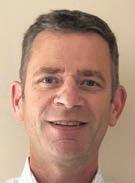

“The rubber meets the road when companies are incentivizing their pay in different ways,” Peck said. “That data should show up in executive compensation plans if it’s really true.”
Considering that companies are required to file lengthy proxy statements with the U.S. Securities and Exchange Commission, investors and the public at large have a direct line into the link between ESG principles and C-suite pay.
An 86-page report from KeyBank, for example, details best ESG practices in climate stewardship, data privacy, DEI and more. Key has also assisted small businesses negatively affected by the ongoing pandemic, while accelerating a ordable housing investments in low- and moderate-income communities.
“The ESG landscape is evolving very quickly and impacts many different areas of a large company like Key,” a Key spokesperson said in an email. “That makes it even more critical that we, as a company, stay coordinated and aligned on those priorities that will make the most impact.”
A serious proposition
On the compensation side, Key employees can participate in shortor long-term performance plans that re ect company ESG aims.
Achievement of these goals in uences the dollar amount a participant may receive, the Key spokesperson said.
Per the survey, certain ESG goals can be dropped if met in a speci c period. Metrics like employee safety are evergreen, with goals around DEI evolving as necessary. Some companies may not link ESG goals to compensation at all, a perfectly ne outcome as long as it is the product of careful deliberation.
“What matters for companies is
Organizations serious about linking ESG to executive objectives must make that connection precise, Peck said.
“Imagine Progressive or any company taking into account stakeholder worries about executive pay, but not showing the details,” Peck said. “If, (for example), your DEI goals are that important, say exactly what they are. I’m not trying to be critical — I’m saying that explicitly inserting ESG-type metrics into incentive plans is neither easy nor clear that it is actually desirable.”
guring out where they can have the biggest impact on the welfare of stakeholders, the environment and themselves,” said Washington of e Conference Board.
“It’s not too late for organizations to give this careful thought. Is it more important to focus on DEI, safety or human capital management goals? Focus on where you can make the most impact.”
Contact Douglas J. Guth: clbfreelancer@crain.com
36 | CRAIN’S CLEVELAND BUSINESS | D ECE M BER 12, 2022 FOCUS | BOARDS AND CORPORATE GOVERNANCE ON THE OVER 6 IN 10 READERS BELIEVE CRAIN’S GIVES THEM A COMPETITIVE EDGE Stay Ahead of What’s Next in Industry News RECOGNIZE TOP ACHIEVERS IN CLEVELAND'S PREMIER PUBLICATION MERGERS ACQUISITIONS NAME CHANGES NEW BUSINESS LINES MAKE AN ANNOUCEMENT! Debora Stein | dstein@crain.com
PAY From Page 10
Spierings
Washington
Peck
“INVESTORS ARE NOT PERSUADED BY COMPANIES THAT HAVE TACKED ON CLIMATE GOALS OR DEI INTO THEIR EXECUTIVE COMPENSATION PROGRAM. THERE HAS TO BE A STRONG BUSINESS CASE FOR CHOOSING THAT SUBJECT AREA. INVESTORS WANT TO MAKE SURE THOSE GOALS ARE NECESSARY AND RIGHT. IT’S NOT AN ORNAMENT ON A CHRISTMAS TREE.”
—Paul Washington, executive director of The Conference Board ESG Center
IT’S WORK ING! IT’S WORK ING!

In Ohio, next-generation mobility is driving new economic opportunity. Honda’s electric vehicle investment places the state at the forefront of a smarter, more sustainable future. See how we’re putting Ohioans on the fast track.

+
HEALTH CARE
A LIFELINE: Support and resources are important for a growing population of caregivers. PAGE 41

OPINION: Additional support for caregivers should come from employers, friends and family. PAGE 43
OPINION: It will be harder for seniors to age in place without solutions for home care workers. PAGE 43
CAREGIVERS IN CRISIS
LYDIA COUTRÉ
As Ohio’s senior population rapidly grows, so does the need for the home care workers to help them age in place.
But amid a national health care shortage, stagnant wages for a demanding job, and slow growth in the labor force, strengthening the home care workforce is a daunting task.
Ohio’s projected job openings for direct care workers from 2018 to 2028 is 229,800 direct care workers who assist older adults and people with disabilities with daily tasks, such as dressing, bathing and eating, according to
PHI, a New York-based national organization committed to strengthening the direct care workforce through research and advocacy.
“ e urgency of this need, it’s not something we can put aside,” said Larke Recchie, CEO of Ohio Association of Area Agencies on Aging, a nonpro t trade association for area agencies. “We just need more ability to keep more people in their homes; it’s what they want, and it is also the most cost-e ective way of caring for people who have chronic disease or some types of disabilities.”
Home care workers include both skilled workers — clinical providers who visit pa-

tients at home, o ering nursing care and physical, occupational and speech therapy, etc. — and the direct care workers and personal care aides who help with activities of daily living.
Between 2020 and 2040, Ohio’s population of those 60 and older is expected to grow more than four times faster than the state’s overall population, according to data from the Ohio Department of Aging. e numbers also project a 51% increase in the portion of Ohioans 85 and older, a population that often has an increased need for support, care and the cost of that care, said
Many are grappling with how to address these changes in a deliberate, thoughtful manner, she said.
e pool of home care workers has become “dangerously low,” at a time when the older population is growing at a rapid pace with a strong preference to age in their homes, she said
“Essentially, the convergence of all of these things makes it crystal clear that one of our top priorities has to be the direct care workforce,” McElroy said.

38 | CRAIN’S CLEVELAND BUSINESS | D ECE M BER 12, 2022
SPONSORS
GUS CHAN FOR CRAIN’S CLEVELAND BUSINESS
Ursel McElroy, director of the Ohio Department of Aging.
Caregiver Marcia Clark prepares lunch for her client, Emily Coker. Clark works for Visiting Angels, a home health care agency.
staf
Low wages,
ng shortages hinder growing need for home health services
"WE JUST NEED MORE ABILITY TO KEEP MORE PEOPLE IN THEIR HOMES; IT'S WHAT THEY WANT, AND IT IS ALSO THE MOST COST-EFFECTIVE WAY OF CARING FOR PEOPLE ... "
—Larke Recchie, CEO of Ohio Association of Area Agencies on Aging
Sta ng challenges
e Western Reserve Area Agency on Aging (WRAAA), which provides care for older adults and individuals with disabilities in Cuyahoga, Geauga, Lake, Lorain and Medina counties, currently has about 700 clients in need of home care services across the ve-county region. is total includes clients who are getting some care, perhaps at half as many hours a week as they need.
Over the past three years, the agency has seen about a 400% increase in unsta ed or partially sta ed cases, which it began tracking more closely after COVID closed adult day care centers in 2020 and prompted a shift to home care. e realities of sta ng during a pandemic (pandemic-related resignations and shortages, fear of having providers in the home), national employment trends, and competition for workers have all continued to be a challenge for the agency.
“I will tell you that the 25 years I’ve been in this business, I’ve never seen it as hard to get a personal care service than it is right now,” said Doug Beach, CEO of WRAAA. “So mostly we’re talking about bathing and grooming and sometimes transferring from a bed.”
Craig omas, WRAAA’s senior director of clinical services, agreed. It used to be a competition for services, he said, but now it’s about active recruitment every day to be able to sta cases.
Nonmedical care is a key piece of the home health puzzle.
“ ose agencies that are just doing that book of business are absolutely an essential part of making health care at home work,” said Joseph Russell, executive director of the Ohio Council for Home Care and Hospice, a nonpro t trade association providing advocacy, community education, technical support and training for providers in the state. “And without them, in fact, it doesn’t work.”
What is being asked of home care workers has changed signi cantly over the years, said Connie Hill-Johnson, managing director of Visiting Angels Cleveland, an organization providing nonmedical home care to the Cuyahoga County area. ere was an abundance of sta when she started the franchise of Visiting Angels 20 years ago. Plus, the work looked di erent: ere was less chronic disease, fewer memory care cases, and seniors were more ambulatory. She used to hire a lot of people in their 60s and 70s who wanted to help run errands, cook meals, and be a companion. But home care now involves a lot more physical labor — turning someone in a bed, transferring clients, lifting them from a toilet — that has really shifted the type of people who can and want to do the work, she said.
Bryce Gray, executive director of Northeast Ohio Home Care, a home care services

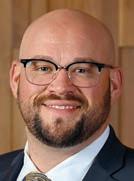

organization providing skilled care, also noted that what is asked of home care workers has “skyrocketed” over the years.
“What is required from a lot of the home health and personal care aides, nursing assistants, direct care workers is backbreaking; it is hard,” Gray said. “It’s not only backbreaking, but it’s emotional. It is all of those things. And they are getting paid $5, $10 less compared to jobs that are very easy in comparison; jobs that will probably make it a lot easier for you to take time o , or have exibility.”
In 2021, the median hourly wage for home health and personal care aides in Ohio was $11.54 (adjusted for in ation), according to data analysis by PHI.
at’s up 5% from $11.04 in 2011. Factoring in nursing assistants, who are paid a bit more ($14.34 hourly in 2021), the median
hourly wage for all direct care workers in Ohio in 2021 was $12.61.
Evelyn Du y, associate director of the University Center on Aging and Health at Case Western Reserve University (CWRU), said a number of the patients in her practice — all of whom are older adults — have recently lost their longtime aides as many quit.

“And that’s traumatic for the older adult, because then they have somebody new that comes in and doesn’t know their routines,” said Du y, also a professor in CWRU’s Frances Payne Bolton School of Nursing. “And some of them had gaps where they weren’t able to have home health care provided at all. Usually the nursing part wasn’t as much of a problem as the aides that would come into their home.”
Pandemic shifts priorities
While the pandemic turned some workers away from home care, it drew others to it. Marcia Clark joined the team at Visiting Angels this year after several years working at the Cleveland Clinic as a nursing assistant. roughout the pandemic, the hospital setting became overwhelming, so the change of pace to focusing on one patient was a better t. Since the spring, she’s been caring for Emily Coker, 92, whose son works full time. Clark feeds her lunch, makes sure she’s clean and dry, keeps her safe as she moves through the house, and assists with other needs during the day.
And listens to Coker’s stories.
“ ey just want to be heard,” Clark said. “And she can be a riot. It’s not bad at all.”
Gray has also been able to recruit some workers who were burned out from clinical spaces and shift work into the home setting and the exibility it can o er. She o ers bene ts and reimburses for mileage, but that’s not possible at every agency.
Many struggle under the Medicaid reimbursement models and have even opted to shift their payor mix to private pay entirely.
What agencies are reimbursed for a home health aide allows them to pay about $13 an hour, but the market wage — or what they’d have to pay to attract workers, — is closer to $17 an hour, Russell said.
“So they can’t attract the people they need because the Amazons of the world and all these other places are able to pay at least $15 an hour,” he said.
Ultimately, the cost of the work is outstripping the attached reimbursements, which makes it di cult for agencies to invest in bene ts like retirement plans, health coverage or even gas reimbursement, Russell said.
Northeast Ohio Home Care is a joint venture among four long-term care organizations: Jennings, Eliza Jennings, Laurel Lake Retirement Community and the Village of St. Edward. Initially launched within Eliza Jennings, it became an independent nonpro t earlier this year. Having the pooled resources and shared administrative overhead from all four of its joint owners has been immensely helpful in cost structure, Gray said.
e pandemic brought an in ux of dollars into the state, such as provider relief funds that helped keep some home care entities a oat, McElroy said. But many of these added dollars are also nite, such as dollars states received to strengthen the infrastructure of their home and community-based service systems.
“Now, as you know, one-time dollars are just that,” McElroy said. “And so while we were able to do those things really quickly, and continue to see if there are opportunities to do so, I do think that we have to look more long term about ways to sustain their businesses.”
She’s been exploring options with longterm impact for such dollars, such as technology investments to alleviate manual work or an outreach campaign to promote careers in home health and direct care work.
Considering new options
Gov. Mike DeWine’s administration convened the Ohio Direct Care Workforce Expansion Working Group, a coalition of subject matter experts and key state entities and agencies that has been meeting for several months to examine the most pressing issues and to nd solutions. McElroy said

DECEMBER 12, 2022 | CRAIN’S CLEVELAND BUSINESS | 39
Continued on next page Residential care homes Nursing homes All direct care workers $20.2K $22.1K $20.9K 20112012201320142015201620172018201920202021 60,000 70,000 80,000 90,000 Nursing assistants Home health personal care aids CRAIN’S CLEVELAND BUSINESS GRAPHIC
annual earnings for direct care workers in Ohio Ohio direct care worker employment SOURCE: PHI, ‘WORKFORCE DATA CENTER’ Based on data from 2020. Growth Separation Home health personal care aides Nursing assistants All direct care work 23K 890 129.1K 76.8K 23.9K 205.9K Direct care worker projected job openings, 2018-2028 Job openings in Ohio are expected because of growth (increased demand based on industry trends) and separations (workers leaving the labor force because of retirement, disability, etc. or moving into new occupations). 20112012201320142015201620172018201920202021 $11 $12 $13 $14 Nursing assistants All direct care workers Home health personal care aids Ohio direct care workers hourly wages Wages are adjusted for in ation.
Median
Hill-Johnson
Russell
Thomas Du y
Beach
she expects the group will soon release its observations and suggest a path forward.

O ering educational bene ts, technical support and incentives to recruit and retain workers can all be vital supports for the workforce, as well as nding ways to reduce and eliminate administrative hurdles, such as streamlining certi cation processes across multiple agencies, she said.
e ODA’s State Plan on Aging laid out a series of objectives to support older adult health and well-being. One included e orts to improve the capacity of the home care workforce through a number of strategies, including direct care workforce investment, training and job design. Speci cally for the workforce, it set a goal to increase the number of personal care and home health aides from the 2018 baseline of 149 per 1,000 adults — age 65 and older, with a disability — to 224 by 2029.
Kathy Blake, Summa Health’s senior vice president of post acute and at home care division, said the system has created a reten-


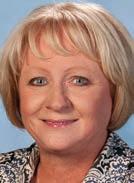









tion dashboard to help identify signs people might be struggling in their positions or having concerns. Some of the other recruitment and retention tools they’ve implemented: examining caseload, mileage and call frequency to see if there’s something that needs to be adjusted, as well as extending orientation time and o ering additional support to new team members to ease onboarding.
At UH, nurses have historically needed to work bedside a few years before shifting to home care, but they’re now augmenting ed-
ucation for new nurses to get them into the community, said Brooke Nutter, University Hospitals’ interim vice president for integrated delivery solutions. ey’ve extended their orientation and added a mentorship program for new hires to connect them into the fabric of the home care community.
Right now in health care and home care, retaining employees requires constant, bidirectional check-ins to see how employees are doing, what challenges they’re facing and what can be done di erently, Nutter said.

“I’m a very rm believer in those that are doing the work, like we should be taking our advice from them,” she said.

“Because oftentimes, the wisdom is held by the people that are doing the work.”


While absolutely vital, recruitment and retention will only go so far. Leaders say the solution requires much broader, innovative solutions.
McElroy stresses the importance of healthy aging. People who live healthier for a longer part of their lives have a less substantial, less costly need for care, and are more likely to be able to age how and where they want: at home for longer. Plus, healthy aging allows individuals to engage in the economy longer, she added.
Recchie, of the Ohio Association of Area Agencies on Aging, said perhaps arti cial intelligence could help augment workers so they’re not needed for as many hours. e industry has to look beyond the same number of people for the same number of hours in homes, she said.

Russell agreed.
“I’m going to be honest with you: I don’t think we’re ever going to solve this workforce issue,” Russell said “I think we’re going to have to just accept that this is going to be something that we’re going to have to deal with for the foreseeable future, and we’re going to have to think di erently about how we’re doing stu , but I remain optimistic that we’re going to get there.”
Lydia Coutré: lcoutre@crain.com, (216) 771-5479, @LydiaCoutre













40 | CRAIN’S CLEVELAND BUSINESS | DECEMBER 12, 2022
From previous page cibc.com/US From your name on the door The CIBC logo is a registered trademark of CIBC, used under license. ©2022 CIBC Bank USA. Banking products and services offered by CIBC Bank USA. Member FDIC. This ad is not to be construed as an offer to buy or sell any financial instruments. Ambition drives your business and helping you reach your goals drives us. With expert advice and banking solutions tailored to you, our team is here to get you from where you are, to where you want to go. COMMERCIAL BANKING | CAPITAL MARKETS | PRIVATE WEALTH To your name on the building
Blake
Nutter
UNIVERSITY HOSPITALS
Jonathan Sague, a caregiver at the time, works with Lucy Paolucci, a University Hospitals home care patient. Sague is now chief operating o cer and director of clinical operations at UH St. John Medical Center.
A LIFELINE FOR FAMILIES
ous “Caregiving in the U.S.” report.
When Michael Coker promised his mother he’d care for her at home as she aged, he had no idea what that would eventually involve: helping her bathe, assisting her to and from her bed, changing her diaper.
But day in and day out, Coker’s love for Emily, 92, has helped him keep that promise.

“It just all comes down to love,” said Coker, 65, who moved his mother into his Cleveland home about three years ago from his home state of Georgia. “We were always a strong family together — mom, dad and me and my sister. So we always helped each other, took care of each other. ey took care of me. Now it’s my turn. I think a lot of people are saying that these days.”
More than 1 in 5 adults in the United States are caregivers (53 million), having provided care to an adult or child with special needs within the past 12 months, according to a 2020 report from AARP. is is a 21.8% increase from the 43.5 million caregivers it counted in 2015 in its previ-
More than half of adults between age 50 and 80 said they have helped someone 65 years or older with health, personal or other care tasks in the past two years, according to the University of Michigan’s National Poll on Healthy Aging conducted in July 2022. Roughly two thirds of those surveyed reported at least one challenge: emotional or physical fatigue (34%), balancing work or other responsibilities (31%), lack of time for self-care (22%), balancing time with family/friends (21%).
“You’ve made this commitment to have your loved one age in place at home,” said Lisa Weitzman, director of strategic partnerships for the Benjamin Rose Institute on Aging, a Cleveland-based nonpro t that aims to support caregivers and people as they age. “What is the cost to that person? Not only in terms of lost dollars at the workplace, but their physical health and mental health, their relationship health — all these di erent ways that caregiving impacts them? And I think it becomes an oftentimes overlooked, but critical piece of this conver-
sation around what’s happening to care in our communities.”
In scal year 2007, more than half (54%) of individuals with disabilities and chronic conditions received institutional care (such as in nursing homes or intermediate care facilities for individuals with intellectual disabilities), with the remaining 46% receiving home and community-based services (HCBS), according to data from the Ohio Department of Medicaid. By scal year 2021, HCBS grew to account for an estimated two thirds of such care, per the state gures.
As Ohio’s population ages, employers need to be aware of these shifting dynamics and the needs of caregivers, said Patty Starr, president and CEO of Health Action Council (HAC), a nonpro t coalition representing midsize to large employers that aims to enhance human and economic health.
“We have to recognize it may impact the availability of our future workforce,” she said. “Some of those individuals that are currently in the workforce — and are very valuable to the workforce — may end up
dropping out of the workforce due to the care needs of family members.”
e care of a family member or friend, done out of so much love, can be incredibly taxing and stressful for the caregiver, said Margaret Sanders, associate professor in the Department of Family and Community Medicine and associate director of geriatrics at Northeast Ohio Medical University.
“ ey need support, and they need to know resources that are available for them,” she said.
One such resource is a family caregiver support program developed by Benjamin Rose and licensed to organizations around the country as BRI Care Consultation. Locally, the institute delivers it as WeCare… Because You Do, or WeCare. e virtual program aims to reduce stress and support caregivers by helping them with community services coordination, long-term care planning, housing options, understanding respite possibilities, nancial and legal concerns, and more.
DECEMBER 12, 2022 | CR AIN’S CLEVE LAND B USIN E SS | 41
LYDIA COUTRÉ
Continued on next page
Michael Coker watches as his mother, Emily, talks to caregiver Marcia Clark. Coker promised his mother he’d care for her at home as she aged, and hired Clark to help at home during the hours he works.
BUSINESS
GUS CHAN FOR CRAIN’S
CLEVELAND
“THEY
TOOK CARE
OF ME. NOW IT’S MY TURN. I THINK A LOT OF PEOPLE ARE SAYING THAT THESE DAYS.”
—Michael Coker is a caregiver for his 92-year-old mother
Benjamin Rose has been working on having organizations o er WeCare as an employee bene t. For instance, some employers will o er to pay for three months of the service for any employee who wants to use the program, recognizing that the cost is far less than that of absenteeism or potentially losing an employee who’s been with them for many years.
“I think it really resonates now, in this heightened awareness of employee mental health and well-being, certainly caregiver stress, caregiver strain is a huge piece of it,” Weitzman said. “So as organizations are looking to keep their health care costs down, looking at other ways to do that, and recognizing, wow, if we provided support for our employees around caregiving, we could ultimately impact our cost of health care in general, and that’s really how we’re engaging employers.”
In November, CareSource, a Dayton-headquartered nonpro t managed care organization, announced a grant to WeCare that expanded free access to the service throughout all of Ohio, according to a news release.
Until earlier this year, Coker was taking care of his mother on his own. His neighbors looked in when possible, but his sister is down in Georgia and he works full time.
“It’s nerve-wracking, because your mind is split,” he said. “You’re working and at the same time, you’re wondering, are they OK?”
In April, after a fall put Emily Coker in the hospital, he hired her a personal caregiver from Visiting Angels, a network of home care franchised agencies. Ever since, Marcia Clark looks after his mom eight hours a day, ve days a week, and leaves Coker a note detailing how the day went.
“ eir name kind of says it all,” he said of Visiting Angels. “ ey’ve been a godsend, ’cause you really feel totally alone in this entire process, unless you have a whole lot of siblings or family that is there to help you at the same time.”
At NEOMED, Sanders helps facilitate grant-funded programs to improve the care of older adults, including o ering free training for caregivers. Patti ornborough — who has been a caregiver for her wife, Tracey Mallamaci, for many years — has taken one such program, earning a geriatric resource certi cate, which includes online didactics and weekly discussions.
e program hit on a wide range of topics caregivers will need to know, and taught her a lot about being patient with herself and “to not be so hard on yourself if you don’t know everything or do everything right,” said ornborough, regional program director for the Northeast Ohio Area Health Education Center at NEOMED.
In addition to caring for Mallamaci (who has Huntington’s disease, a genetic condition causing nerve cells in the brain to progressively break down), ornborough helps from afar with the care of her elderly mother and, until his recent passing, her father.

Used to taking care of everything, ornborough often nds herself taking on more and more, without knowing when to stop, she said.
“So before you realize you’re overwhelmed with not only taking care of my wife and nances and my parents, but then I wind up taking on extra burdens at work, and not setting my boundaries until I realized, oh, my God, I’m so exhausted. Something’s got to give.”
Readjusting that can be tricky, she said. She recommends other caregivers nd support groups and other networks of support because “you can’t go about it yourself.”
As companies improve polices around maternity and paternity leaves, Sanders
said she’d like to see something in that vein for caregiving. She also points to institutions that allow employees to donate spare sick time or vacation time to a colleague in need of extra time o .
In a recent report, HAC identi ed seven actions for employers to help build employee caregiver capacity, including adapting the culture, creating internal support groups, seeking input from caregivers, evaluating results and implementing exible policies, such as remote work and self-set work hours. It also suggests training middle managers to be caregiver friendly so they don’t feel stuck between goal-driven leadership and caregiving supervisees.
Finally, employee bene ts and resources can be an important tool, and not all traditional bene ts are helpful, according to the report. Employee Assistance Programs are underutilized and insu cient for meeting the emotional and informational needs of employee caregivers, who may feel stigmatized by the idea of seeking a counselor.
“I have the home responsibilities, and I have work responsibilities, and how do I manage to two of them to be successful in both?” HAC’s Starr said. “I don’t believe that it’s an either/or in most situations. I think as an individual, you can do both when you’re in the right environment, really implementing and supporting potentially
exible policies within the organization from an HR bene t standpoint.”
Now that Michael Coker has hired a caregiver to look after his mother when he’s at work, he’s been able to focus without a constant worry of what is going on with his mother when he’s away.

“A lot of people say, what you’re doing, what I’m doing, is a lot of sacri ce, and you’re doing more than most people would do,” he said. “I made a promise to her a long time ago that I wouldn’t put her in a home. I just told her I wouldn’t, and I’m trying to keep that up.”
Lydia Coutré: lcoutre@crain.com, (216) 771-5479, @LydiaCoutre
42 | CRAIN’S CLEVELAND BUSINESS | D ECE M BER 12, 2022
Caregiver Marcia Clark helps Emily Coker to her bedroom. Clark works for Visiting Angels, a home health care agency.
From previous page
Michael Coker hired a caregiver to look after his mother when he’s at work so he can focus without worrying what is going on when he’s away.
PHOTOS BY GUS CHAN FOR CRAIN’S CLEVELAND BUSINESS
Employers, friends, family can help support caregivers
ORION BELL
single one of us, if we live long enough, is likely to experience being a family caregiver, needing a family caregiver, or both.”
— 2022 National Strategy to Support Family Caregivers
Family and friend caregivers provide aid and support in a variety of ways for their loved ones: running errands, performing household tasks, providing personal care or managing nances. ey are often the interpreter, patient advocate, therapist and nurse’s aide, as well. e role is informal, uncompensated and, all too often, unrecognized.
e role of family caregiver is universal, cutting across economic, generational and demographic lines. According to the “Caregiving in the U.S.” 2020 report by AARP, more than 50 million Americans act as caregivers for a loved one, providing, on average, approximately 24 hours of care per week. e value of this care is estimated at more than $470 billion per year. at’s more than the amount funded by Medicare, Medicaid, private insurance, charity care and out-of-pocket expenses combined. And it is a responsibility taken on in addition to the roles of parent, spouse, student or employee.
In an article in HR Magazine, Kathryn Tyler wrote about the impact of caregivers’ responsibilities in the workplace.
Nearly 1 in 5 workers in the U.S. are also caregivers. Most choose not to tell their employers about their situations, citing concern that they will be “viewed as less than fully committed” to their jobs.
More than half of working caregivers reported missing work, arriving late or leaving early on occasion.
One in six reduced their status from full time to part time. Others quit work entirely.
e nancial, physical and emotional toll can be signi cant. Caregivers are more likely to experience poor physical and emotional health. Leaving the workforce to care for a family member doubles the likelihood that a woman will end up living in poverty.
COVID-19 disrupted routines and compounded the challenges faced by family and friend caregivers. Just as working parents had to contend with school closures and virtual learning assignments, caregivers were faced with reduced availability of a variety of in-home and community-based services. Home health agencies, Meals on
Aging at home will be harder without solutions for direct care workers
CONSTANCE HILL-JOHNSON

“Unrecognized, Undervalued and Unappreciated”: at’s the title of a podcast a colleague and I did right at the beginning of the pandemic in 2020. At that time, the home care industry, which is part of the broader health care arena, was challenged with nding people who saw this career as a viable profession with a growing need for services they could provide. at’s been the case for most of the 20+ years I’ve owned my agency, Visiting Angels.
Since the pandemic, it has gotten much worse as workers are opting to work elsewhere, be it Amazon, Uber or a retail store. I’ve met very few seniors who want to leave their homes and move into a facility. Most want to age in place for as long as they can, even if others know it may not be safe.

As we all know, there is an enormous shortage of “service workers” across the country. Everywhere we go, we see signs posted that say “hiring now.” is crosses many industries. What’s not reported is the number of aging seniors, at home, with chronic illnesses, who can’t get in-home care. Seniors who are at risk of being hospitalized for not having the needed assistance to live safely and independently. It doesn’t matter if they qualify for Medicaid services or whether they can pay privately, the number of available aides (they’re called caregivers at my company) continues to dwindle.
Why is this? Should the question be, though, what can be done about it?
Workers at the lower rungs of the home-
care industry — mostly women and people of color — are among the lowest paid in the United States. e median pay for personal care aides was just $14.27 an hour in 2021, according to PHI, a nonpro t that publishes annual reports on the national home-care workforce.
Most independently owned agencies can’t a ord to o er full benets due to the variability of service hours that is a direct result of the care needs of each senior.
Every senior doesn’t need full-time care.
Some just need a few hours a day, two or three days per week. Working in home care is a “second job” to some, but for many, if not most, it is their primary source of income.
Read again my opening three words — unrecognized, undervalued and unappreciated. at’s how many caregivers feel today. ey are the ones doing the hard work, in homes and facilities. ey’re expected to operate with grace and compassion at all times, while carrying out what’s viewed as the “least desirable” tasks when caring for an aging senior.
Why are companies like mine in business? e demand for services continues to
Wheels programs and adult day programs dealt with social distancing requirements and expanded safety standards that helped reduce community spread, but also limited access to services.
e pandemic helped raise awareness of the challenges faced by families, and how employers can support workers with caregiving responsibilities.
Employers can provide a variety of support for working caregivers. ese may include:
` Paid sick leave and exible policies that allow workers to use their sick leave when needing to provide care for a loved one.
` Flexible work hours.
` Remote work options.
` Employee assistance programs that aid in identifying resources for caregiver support and access to support groups or informational sessions.
` Elder care bene ts that mirror supports o ered to parents of young children.
Benjamin Rose Institute on Aging and other aging-services organizations provide a variety of outreach programs that can be o ered in workplace settings. Employers who o er caregiver-friendly policies and bene ts can reap the bene ts of greater employee retention and engagement.
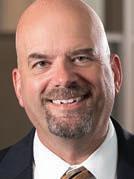
Caregiver supports are not limited to the workplace. Most of us either nd ourselves in the caregivers’ role or know someone who
is. Aging parents, a loved one with a chronic health condition or parents of an adult child with a developmental or cognitive disability — all of these are examples of the people who are family caregivers. Here are ways we can support them:
` Because caregiving responsibilities can lead to isolation, check in on your friend who is caregiving, asking not only “how is your mom?” but also, “and how are you?”
` Support community connections by nding activities that caregivers and their loved one can do together.
` Help with errands and chores.
` Help develop a care plan for their loved one, including identifying others who can be part of the informal team of caregivers.
` When appropriate, provide a break. Meaningful respite — eight hours or more when the caregiver is relieved of their responsibilities — is a powerful tool for reducing stress.
In addition to Benjamin Rose, there are many local organizations that also provide a variety of home and community-based supports for families. Learn more about services and ways that you can help by contacting your local Area Agency on Aging or County Council on Aging and Disabilities. Organizations like Benjamin Rose rely on volunteers and donations to ful ll their community missions. ere are many ways to support family caregivers. And many opportunities to help.
exceed the supply of caregivers. Families are spread out across the country and, even when they are living near their loved ones, they don’t want to do the caregiving, as it can be physically demanding. ey don’t want to do the personal hygiene; they don’t want to face that their parent is incontinent. What I have personally seen over the last several years is that people are living longer, but with more chronic diseases. I believe being a home care aide is a profession and, no, not every aide wants to become a nurse. ey are trained and skilled to do the work, and want to provide one-on-one care. at’s why many leave the facility setting.
About 1 million more home-care workers will be needed by 2030 as the baby-boom generation nishes aging into retirement — what demographers call the “silver tsunami.” What are we as a society going to do?
To recruit and retain workers in this eld, I believe we must rst recognize this as a
highly regarded profession for those with both the heart and skillset to do it. ose of us who really know the criticality of having a well-paid caregiving workforce should tell others and help raise how those who choose this job are viewed in society. ey should be esteemed, applauded and recognized as a part of the health care team, helping to keep seniors out of the hospital, aging safely in their own homes.
It goes without saying that they should be paid more. But who covers this cost? e government or only those who make enough money to pay privately for what can sometimes be 24/7 care? I don’t have the answers, but I do know that this current crisis needs our full attention now. As former rst lady Rosalyn Carter once said, there are only four kinds of people in the world: “ ose who have been caregivers. ose who are currently caregivers. ose who will be caregivers, and those who will need a caregiver.”
DECEMBER 12, 2022 | CR AIN’S CLEVE LAND B USIN E SS | 43
“Every
Orion Bell is CEO of Benjamin Rose.
Constance Hill-Johnson, MPA, is owner and managing director of Visiting Angels Senior Homecare. She also is board chairwoman for the Cleveland Foundation.
Emily Coker makes her way to the living room under the watchful eye of caregiver Marcia Clark.
GUS CHAN FOR CRAIN’S CLEVELAND BUSINESS
Irishtown Bend Park wins key grants, even as land lawsuit lingers
MICHELLE JARBOE
With nearly $17 million raised toward a roughly $45 million budget, the Irishtown Bend Park project along the Cuyahoga River is gaining momentum — despite ongoing litigation over a corner of the underlying hillside in Cleveland’s Ohio City neighborhood.

e Jack, Joseph and Morton Mandel Foundation announced Tuesday, Dec. 6, that it has awarded a $5 million challenge grant for the 23-acre park. e project team will have two years to secure the full amount by raising matching funds from other foundations and companies.
Separately, the George Gund Foundation has provided a $3.1 million grant for the park, which will knit together a growing trail network and put the riverfront in reach of neighborhood residents, including elderly tenants and families who live in nearby public housing complexes.
“ e park is now ready to be put on the map,” said Greg Peckham, executive director of LAND Studio, one of the organizations leading the project.
e partners hope to begin construction on the park, an 18- to 24-month undertaking, by mid-2025.
But that timeline — and the entire endeavor — hinges on stabilization of the hillside, an unsteady slope that looms over, and threatens, a federal shipping channel.
e Cleveland-Cuyahoga County Port Authority is leading that stabilization e ort, which will cost about $53 million and require a dramatic regrading and the installation of new bulkheads along the water.
e agency originally hoped to start construction this year.
But the port is mired in a dispute over the lone holdout property, a vacant building topped by a prominent
PETROS
e Farnam Manor dates from 1834 and was constructed by Everett Farnam, the son of John Farnam, a Revolutionary War veteran who moved to Rich eld from Connecticut in 1812. John Farnam paid $3,000 for the original 1,200 acres, according to “ e Farnams,” a history by Bill Ellis, a well-known writer and local historian. Everett Farnam expanded holdings to more than 2,000 acres. Sites of the original log cabin and an older frame home are near the house.
Over the years, the house changed hands and uses several times. In the 1920s, it was a speakeasy. For decades it was a restaurant called the Danish Smorgasbord, and even did a stint as a house museum and event center. When the Grateful Dead played at the former Rich eld Coliseum nearby, its surroundings and neighboring forested properties became campsites for scores of Deadheads.
When Petros looked at the house, he felt it was calling him for help. ough his carpenter told him to “run away; run fast,” he was swayed by a concrete plaque a former owner, Susan Yvonne Zaruba, erected in 1990 on a chimney that said, “Love and cherish this classic domain. For I shall go but it will remain. Please take care of it for me, for it is part of history.’’
billboard on West 25th Street, next to the Detroit-Superior Bridge. at 0.41-acre parcel, owned by fatherand-son investors Tony and Bobby George, is the subject of a stalled eminent domain proceeding and other litigation, including a urry of appeals that were recently consolidated.
Port CEO Will Friedman did not respond to inquiries about the status of the stabilization project and the lawsuits. Other members of the public-private hillside partnership are optimistic, though.
“I think that we’re all con dent that we’re going to be able to nd a solution to move things forward. … ere is a constant dialogue between all parties,” said Tom McNair, executive director of Ohio City Inc., a nonpro t community development corporation.
e port and the Georges continue to maneuver and parry in court, but they’re also talking behind the scenes. “We’re in positive discussions on a settlement,” said Bobby George, an entrepreneur and developer behind a company that acquired the corner in 2018.
Peckham described the land ght as a speed bump, not a wall. e litigation is slowing progress but hasn’t halted fundraising. “Hopefully, there will be a breakthrough,” he said.
e project partners have assembled the balance of the site, where park plans show a much more gradual slope from West 25th to the water.
Renderings created by Plural, a San Francisco landscape architecture rm, depict a vast lawn, multipurpose trails, a riverfront walkway and an array of gathering spaces.
Stephen Ho man, chairman of the Mandel Foundation’s board, said the park grant ts the organization’s priorities around urban development and engagement. e project caught
the board’s attention thanks to former Cleveland Mayor Michael White, a senior policy adviser and the director of foundation programs focused on neighborhood leadership and community development corporations.
“ is was a place that was crying out for change,” Ho man said of the hill, which abuts an urban farm tended by refugees and sits behind Cuyahoga Metropolitan Housing Authority’s Riverview Tower.
e site, in one of the city’s fastest-developing neighborhoods, also is a short walk from CMHA’s Lakeview Terrace and Lakeview Tower properties.
e matching period for the challenge grant will run through 2024.
“We hope other people will quickly join the match — the sooner the better,” Ho man said. “We’re anxious to pay out our money.”
e Gund Foundation’s board approved its grant in late 2021 but never announced the award. e idea was to be an early supporter of a long campaign and to let the project partners decide when to go public, said John Mitterholzer, the foundation’s program director for climate and environmental justice.
“It’s a great opportunity to make an investment in what’s going to be an amazing green space,” he said.
Irishtown Bend Park builds on the foundation’s other investments in trails, public spaces and community engagement in the neighborhood. “We care deeply about parks, but we also care about park equity and access,” Mitterholzer said.
Additional funding for the park, so far, is owing from the city, Cuyahoga County and a competitive grant aimed at improving air quality in urban areas. ere’s also state money, from the last biennial capital bill, and a series of smaller philanthropic
grants. e partnership behind the project includes the Cleveland Metroparks, West Creek Conservancy, the Northeast Ohio Areawide Coordinating Agency, the Northeast Ohio Regional Sewer District and the Northeast Ohio Coalition for the Homeless.
Public dollars for stabilization are laying the foundation, while philanthropic and private money will help make the hillside into a place for recreation and respite, McNair said.
e project team has cleared most of the site and aims to tear down a building at the southern end of the property, at West 25th and Franklin Boulevard, during the rst half of 2023. at building, a former motel and transitional housing property for women, served as over ow housing for the homeless during much of the pandemic but has been sitting empty for months.
Councilman Kerry McCormack, who represents the neighborhood,
hang out with my buddies. But I didn’t want to start another business.” en he hit on the idea of using it as a new home for Petros Homes, which needed room to grow.
“I told Gary (Naim, his business partner) I needed to talk him into something,” Petros said. “It took two minutes.”
To accommodate the company’s sta of 30 was another undertaking.
A second building was constructed to house a new display center and provide workplaces for designers and construction sta .
said city o cials are discussing ways to help pay for the demolition.
e Mandel and Gund foundation grants tip the park vision into “the real category,” he said. e plan is solidifying as developers prepare to build hundreds of apartments on low-lying Scranton Peninsula; investors tie up key sites on Columbus Road Peninsula, across the water; and Bedrock, the Detroit-based owner of Tower City Center and waterfront land behind it, re nes a new master plan for its properties.
“I don’t think that any of us fully understand the impact that this project is going to have on our community. … We are so used to not having great access to our riverfront,” McCormack said. “When this park is complete, it is going to completely transform the way that our neighborhood interacts with the river. And I think it’s going to shock people. I really do, in a good way.”
er level to its dormers. However, Petros said the addition is positioned so that the house completely shields it. at leaves the familiar view of the house unchanged from the street.
Mayor Wheeler said Petros “did an amazing job” making the addition mirror the original house.
Petros said Farnam Manor is his sixth o ce. Originally he worked from his basement, then model homes and eventually a Broadview Heights building where it had operations for 20 years.
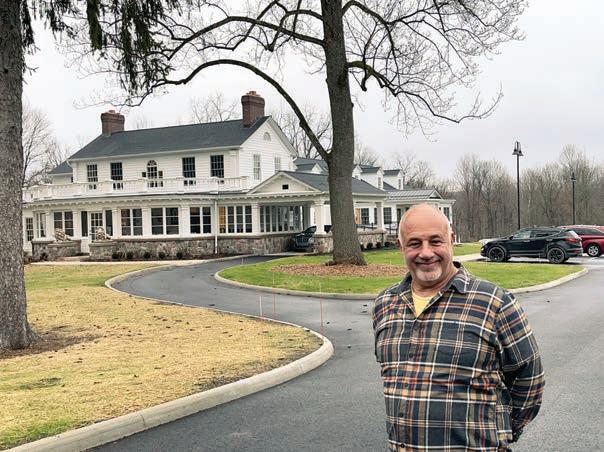
e house was in horrible shape. Copper gutters had split. When it rained, water poured into the walls, Petros said.
Rich eld Village Mayor Michael Wheeler said in a phone interview, “ e house was swirling around the drain. It was about to go in when Sam bought it.” Indeed, immediately after closing the purchase, Wheeler said, Petros had to erect posts in the basement to keep the kitchen from falling into it.
A wooden railing on the front of
the house had to be shored up. “It was being held up by a rope,” Petros said.
e list of repairs is long. “We immediately replaced the roof,” Petros said. “We replaced windows, added insulation and drywall and redid the oors.” e kitchen was totally redone, including the addition of a very contemporary, and huge, island.
Early on, Petros struggled with how to use the house. “I wanted to be here. I thought about putting in a dinner club so I would have a place to
Tricia Soltesz, a Petros design project manager, said, “I pinch myself everyday as I come to work here.” She also had the task of redesigning the old house to serve as an o ce. e house itself became executive o ces, with Petros and Naim in the original front rooms, executive vice presidents upstairs in roomy former bedrooms with their own bathrooms. Other rooms house the accounting sta . e lower level of the addition houses the construction unit. A bank of personal computers on a shared worktable for sta ers who spend most of their time in the eld is the most contemporary touch. e door to the construction unit has a familiar item from the company’s former home in Broadview Heights: A boot brush for workers to scrape mud from their boots.
e addition matches the house, from its wood exterior and stone low-
“ is is what it took to get me out of Broadview Heights,” Petros said of Farnam Manor. “We built 3,000 homes there.”
As it happens, the new location is also centrally located to serve the company’s far- ung operations. Current home sites stretch from Cuyahoga Falls to Westlake. Customers go there to meet with designers and select products for their new homes.
Sitting at his desk overlooking Brecksville Road, Petros said he enjoys getting compliments from visitors about saving the place. One impressed visitor sent him a note about the job well done and included three pairs of tickets to Grateful Dead concerts years ago at the Coliseum.
“We get a lot of crap, doing what we do,” Petros said. “You feel good doing something everyone likes.”
Stan Bullard: sbullard@crain.com, (216) 771-5228, @CrainRltywriter
44 | CRAIN’S CLEVELAND BUSINESS | D ECE M BER 12, 2022
REAL ESTATE
An aerial rendering shows the planned 23-acre Irishtown Bend Park in Cleveland’s Ohio City neighborhood. | PLURAL
From Page 1
The hard renovation work mostly done, home builder Sam Petros takes in the view at Farnam Manor, a Rich eld landmark he renovated and adapted as a new place for Petros Homes. STAN BULLARD/CRAIN’S CLEVELAND BUSINESS
en, Harmoni tracks the entire job, generating a report of how long it took Bob to complete it, how long he spent on each process, what tools he used, how often the machine was running or idle. It does that for every machine with a Harmoni console and for every machinist that uses them. at enables a shop owner or manager to track the performance of individual employees, identify who is best at which tasks and who might need training in certain areas. It can reveal processes that slow down jobs or create waste, and keep track of how much use has been put on a cutting tool or when the machine needs maintenance.
e system is agnostic when it comes to ERP software a shop might use, too, and can interface with nearly all of them, Ellis said.
It even gives instructions for speci c tasks and processes and allows ma-
CANON
From Page 1
Healthcare USA, Hiroyuki Fujita, Ph.D., the founder and CEO of Mayeld Village-based Quality Electrodynamics. (Canon in 2019 bought Quality Electrodynamics, known as QED, which develops and manufactures coils that go inside magnetic resonance imaging machines.) Leading Canon Healthcare USA as president will be Hisashi Tachizaki, who will report to Fujita.

Fujita said in a Zoom interview on Monday, Dec. 5, that Canon Healthcare USA will start with employees based at QED’s operations on Beta Drive in Mayeld Village but eventually will require its own building. He said in the interview, “We have several sites under consideration” and mentioned two speci cally: an expansion of the QED headquarters, already home to about 170 employees; and Opportunity Corridor, a burgeoning development site in Cleveland that o ers quick access to the city’s largest health care institutions, the Cleveland Clinic and University Hospitals.
Other potential sites are in the mix, Fujita said, adding, “ ere are some sites that have been reaching out to us.” He did not, however, identify other sites. Fujita said Canon Healthcare USA would consider both new construction and renovation of an existing facility, though it likely would own, rather than lease, its space.
Fujita said the company has been working with JobsOhio, the state’s private nonpro t economic development corporation, in the search process. “ e support we are getting from JobsOhio has been excellent,” he said, adding that Canon Healthcare USA hopes to identify a site in the rst quarter of 2023.
Matt Englehart, a JobsOhio spokesman, said the nonpro t does not disclose whether it’s in project discussions with companies.
Marie Zickefoose, a city of Cleveland spokeswoman, said in a statement that the city “is continually working to bring innovative businesses and quality jobs to the city and to the Opportunity Corridor. We are pleased to be on the list of locations under consideration by Canon Healthcare USA.”
May eld Village Mayor Brenda Bodnar wrote in an email, “Under the leadership of Dr. Fujita, QED has been
chinists to enter notes, which can help more quickly train them and improve their performance, Ellis contends.
So far, the folks he’s shown it to seem to agree.
“It is a very cool idea and it’s needed,” said Chandler Fi ck, director of the EVOLVE Technology Entrepreneurship Program at the Youngstown Business Incubator, which has been working with Ellis and seen the Harmoni system. Ellis also gets support in and from Akron, and Harmoni was founded and is based in the city’s Bounce Innovation Hub downtown.
Daniel Longo, the Youngstown incubator’s engineering project manager for advanced manufacturing, said he is also impressed.
“It’s great IOT technology that they’re developing. Especially in the world of CNC shops, there’s a huge market vertical for what they’ve developed,” Longo said. “It really jumps into the process monitoring of what’s causing lag times.”
Longo and Fi ck said that Harmo-
an innovative industry leader in medical imaging equipment, and we are proud that QED has chosen May eld Village as its home. We are excited about the prospect of expanding QED’s headquarters to include the operations of Canon Healthcare USA.”
John Marquart, the village’s economic development manager, said “there’s nothing rm” regarding an expansion of QED in May eld Village. He added, though, that village o cials have “stayed in pretty constant contact with the company (QED)” over the years and “We stand ready to help” aid an expansion project if necessary.
He noted May eld Village voters in May approved a zoning overlay that gives property owners on Beta Drive exibility to manage properties by, for instance, reducing setbacks and increasing building height.
Building up a business
Canon Inc. on Friday morning, Dec. 9, responded to a third email request from Crain’s to address plans for Canon Healthcare USA.
In response to emailed questions, Canon said it was “not ready to announce the details” of anything related to the size or locations of a headquarters building for Canon Healthcare USA in Cleveland. e company targeted Cleveland due to its “long history of medical innovation” and its proximity to other “corridors of medical innovation” in Boston, Chicago and New York.
It con rmed that it expects to make the $300 million investment “within a period of three to ve years.” Canon added, “Facility-related investments, including construction of the new company’s buildings, are expected to be completed by 2024. In addition, we will invest in research facilities and human resources, and we expect to have manufacturing facilities in the future.””
Company executives also discussed the new unit at the end of November at the Radiological Society of North America (RSNA) conference in Chicago, according to accounts in trade publications AppliedRadiology, Fierce Biotech and Radiology Business. e discussions at the conference followed a Nov. 27 news release from Canon Inc. describing, in general terms, the launch of the new unit.
AppliedRadiology, for instance, reported that Canon through the
ni’s pricing model is advantageous to many manufacturers, because it lowers the cost of starting to use the system and takes much of the risk out of the equation for clients.
Ellis said Harmoni doesn’t charge clients for the hardware but relies on a monthly subscription fee per machine. Customers can go month-to-month, he said, and if the system isn’t saving them enough money, they can simply cancel the subscription. Fi ck said that’s important to many machine shops that are often challenged when it comes to investing in new technology.
Ellis said he’s getting a strong reaction from the market. Harmoni has already placed its initial run of 50 devices with clients and has orders for more that he said he’s now working to ll. Soon, he said, he’ll likely have to expand his production facilities and hire full-time sta rather than doing most of the work himself with some outside help.
So far, he’s funded Harmoni with only a small amount of private outside
new unit “aims to double its share of the U.S. market for diagnostic imaging equipment” and “sees the U.S. medical imaging market as a key to the company’s growth.”
Canon will transfer assets from other businesses, including QED, to the new subsidiary. By placing QED under the umbrella of Canon Healthcare USA, Canon Inc. said in the Nov. 27 release, it “will aim to increase coordination between its system and component businesses.”
AppliedRadiology noted that “some of Canon’s sales and service operations currently based in California also will be transferred to the new business, improving integration between operations and marketing.” Also helping the growth prospects for Canon Healthcare USA here: Canon in the Nov. 27 release said the new subsidiary will assume an unspeci ed chunk of product sales and service operations from Canon Medical Systems USA, the U.S. subsidiary of Canon Medical Systems Corp.
Fujita said Cleveland is an attractive market to Canon because it’s a “key hub” in the U.S. health care industry; it’s close to the heart of the hospital market on the East Coast and the Midwest; and its history and future positioning as a home for smart manufacturing means it has many executives and other personnel with skills and experience in imaging-based manufacturing and development.
e subsidiary’s launch will come under what Canon calls Phase VI of its Excellent Global Corporation Plan. at plan is designed to help Canon improve its competitiveness in areas of the medical industry that include CT, MRI and diagnostic ultrasound systems; X-ray tubes and detectors; health care IT; and in vitro diagnostics.

Fierce Biotech reported that the planned launch of Canon Healthcare USA “comes amid a period of solid growth for Canon not only in its medical device segments but also in its overall U.S. presence.” It noted that Canon “tallied up nearly 26% year-over-year growth in its sales in the Americas for the rst nine months of the year,” reaching around $6.5 billion. Meanwhile, its imaging and medical divisions brought in a combined $6.7 billion for the period, marking a 12% increase compared with the rst nine months of last year.
Scott Suttell: ssuttell@crain.com, (216) 771-5227, @ssuttell
Reporter Michelle Jarboe contributed to this article
investment money and a lot of sweat equity and bootstrapping, Ellis said.
But a fundraising round is likely in the future, too, which Ellis said he’s condent about, though he hasn’t determined how much he’ll try to raise.
He knows when to be optimistic, though. is is not his rst startup. He
previously co-founded Bezlio, a software development platform company, and the IT consulting rm SaberLogic, both of which succeeded and are still in operation.
Dan Shingler: dshingler@crain.com, (216) 771-5290

DECEMBER 12, 2022 | CR AIN’S CLEVE LAND B USIN E SS | 45 REAL ESTATE CLASSIFIEDS Advertising Section To place your listing in Crain’s Cleveland Classi eds , contact Suzanne Janik at 313-446-0455 or email sjanik@crain.com LIST YOUR AD TODAY CLASSIFIED SERVICES ENVIRONMENTAL CONSULTING C.W. JENNINGS INDUSTRIAL EMPIRE Since 1973 C.W. Jennings Global Enterprise Inc. Manufacturing/Distribution Advising Industrial/Consumer Goods Global Expansion Financing Construction / Acquisitions Corporate Partnering C.W. Jennings Global Trading Centers Inc. International Commerce Network C.W. Jennings Industrial Holdings Inc. C.W. Jennings Industrial Capital Inc. C. W Jennings Industrial Building Inc. For Industrial Services Call Headquarters (216) 505 - 5049 / (855) 707 - 1944 LEGAL ANNOUNCEMENTS Richfield Village Development Site 5.82 Acres C-2 Zoning -Access Road Frontage on Brecksville Rd & Wheatley Rd. Heavy Traffic Counts, Strong Demographics Excellent Workforce Dedicated Traffic Light, Close to I-77 -I-271-Ohio Tpike Call/Text Bill Snow Berkshire Hathway Stouffer Realty at 330 990-0256 or Realtorwilliamsnow@gmail.com www.richfielddevelopment.com SPACE AVAILABLE
Fujita
STARTUP From Page 6
A closeup of the Harmoni device attached to a CNC simulator. | CONTRIBUTED PHOTO
PEOPLE ON THE MOVE
EDUCATION
Baldwin Wallace University
Baldwin Wallace University has named Stephen W. Dittmore, Ph.D., as dean of BW’s College of Education and Health Sciences.

Dittmore previously served as associate dean for research, strategy and innovation in the University of Arkansas’ College of Education and Health Professions. “We are thrilled to welcome such an accomplished higher education leader to oversee vital undergraduate and graduate programs that serve the health and education sectors of our region,” noted BW Provost Stephen Stahl.
EDUCATION
Baldwin Wallace University
Baldwin Wallace University has promoted Susan Kuznik, Ph.D., to dean of the Carmel Boyer School of Business.




The longtime business professor sees BW’s teaching faculty and network of alumni as strengths to be harnessed for future growth and student success. “There are so many great people who have graduated from our school,” Kuznik said. “Working with the advisory councils and Trustees, I have come to know and admire these professionals, their passion for BW and their commitment to giving back.”
LAW
Kate Hickner has been named Cleveland Of ce Managing Partner. She is the rst female attorney to hold the role within the rm and is a highly respected healthcare attorney focused on transactional matters and federal and state compliance regulations. Kate is passionate about expanding access to quality healthcare and improving ef ciency in care delivery. That passion translates into her work serving clients in nearly all areas of healthcare law. She is licensed in Ohio, Michigan, and New York.
LAW
Brennan Manna & Diamond
Kyle Johnson has been promoted to Member and works in the rm’s Akron and Canton Of ces. He is a trial lawyer practicing in intellectual property, commercial, construction, and appellate litigation. Kyle is a member of the Association for Corporate Growth, the Ohio Contractors Association, Construction Employers Association, Builders Exchange of East Central Ohio, and the Building Industry Association of Stark County. He also serves on the Board of Directors for Pathway Caring for Children.
FINANCIAL SERVICES
Oxford Harriman & Company
Oxford Harriman & Company has announced that Thomas C. Erb has joined the private wealth management practice as its newest Partner and Managing Director. Erb works in Oxford Harriman’s Cleveland (Beachwood), OH of ce where, after ten years, he brings his client family from Wells Fargo Advisors to Oxford’s boutique and independent wealth management practice. Erb specializes in holistic wealth management for individuals, families, corporations, and business owners.


oxfordharriman.com/thomas-erb/
LAW
Christopher Meager “CJ” has been promoted to Member. He practices in the Akron and Canton Of ces. CJ counsels clients in the areas of corporate, business, real estate, government and public law, and civil litigation matters and is a City Council Member for the city of Green and Co-Founder and President of the Green Professionals Association. He is a Board Member and serves on the Grants Committee for the Akron Bar Foundation. He is also a Board Member for the Healthy Green Race Series.
LAW
Elizabeth Shively Boatwright has been promoted to Partner with BMD. She is based in the Akron of ce and is a member of the rm’s Litigation and Business practice groups. Elizabeth represents clients in a range of business litigation, corporate advocacy, and commercial matters in both state and federal courts, including contract disputes, employment matters, and class action and multi-district litigation. Elizabeth is a member of the Akron Bar Association.
The Firm welcomed associate Kelsey Holmberg to its Business Practice. A former HLP summer associate, Holmberg focuses on a variety of corporate transactional matters, including corporate formation and governance, mergers & acquisitions, commercial contracts and nancings. She interned with a venture capital rm and worked as a Player Personnel intern with the Cleveland Browns for ve seasons. Holmberg simultaneously earned a J.D. from Cleveland-Marshall College of Law, while earning an M.B.A.

ON THE MOVE — EVENTUALLY: Strategic communications rm Dix & Eaton will move its Cleveland o ce to Playhouse Square. When it does that, though, is still to be determined. Dix & Eaton on Tuesday, Dec. 6, announced it has signed a lease agreement with Playhouse Square to move to a 22,000-square-foot space on the 8th and 9th oors of the Bulkley Building, 1501 Euclid Ave. It said the move will o er “signi cant bene ts,” including “the ability to design a welcoming new space that meets the rm’s needs for a collaborative work environment, with potential for increased marketing opportunities in one of Cleveland’s thriving and attractive districts.” Details of when the move takes place still need to be worked out. Dix & Eaton currently occupies about 25,000 square feet at 200 Public Square, with a lease that runs through April 2025. e rm said it’s “evaluating the timeline options for its relocation.”
LAW
Mathew Doney has been promoted to Partner in the Cleveland of ce. He is a commercial litigator focused on construction law and has rst-chair experience in all stages of litigation. Matt litigates disputes in state and federal court and arbitration forums, including the American Arbitration Association and FINRA, and manages related appeals. He serves as the Membership Chair of Akron Torchbearers and is a Member of the Board and Governance Committee Chair for Alliance Family Health Center.
LAW
Schneider Smeltz Spieth Bell LLP


SSSB welcomes Geoffrey D. Wills as an Associate Attorney in the rm’s Trusts & Estates Practice Group. He focuses his practice in the areas of Estate Planning, Trust and Estate Administration, and Taxation. Prior to joining SSSB, Geoff gained valuable experience as a Tax Analyst at Bloomberg Industry Group in Washington, D.C., where he analyzed federal tax laws, rules, and regulations to assist client decision-making regarding deductions, elections, and tax-free reorganizations.



MUCH ROOM TO IMPROVE: KeyBank has failed on promises to support Black and low- and moderate-income borrowers when it comes to homeownership and has, in fact, become the “nation’s worst major mortgage lender for Black homebuyers,” according to a report by the National Community Reinvestment Coalition titled “Redlined: KeyBank Failed Black America Despite its Commitments to Improve.” Using federal mortgage data, the NCRC scrutinized the lending patterns of the top 50 mortgage lenders in the country and speci cally looked at the percentage of loans made by each to Black borrowers. Of all loans Key made for one- to four-family homes across its footprint in 2021, just 2.2% went to Black customers, according to the NCRC analysis published ursday, Dec. 8. at ranks the Cleveland-based bank at the very bottom among all 50 lenders that were compared.
LAW
Cassandra Manna has been promoted to Partner in the Cleveland of ce. Her practice is focused on estate planning and wealth management, working with family-run business teams to grow and strengthen companies as they prepare for leadership transitions from one generation to the next. She is a member of the Estate Planning Council of Cleveland, Cleveland’s Women in Finance networking group and serves on the boards of the St. Vincent Church Foundation and the St. Vincent-St. Mary High School Foundation.

NONPROFITS
Cleveland Zoological Society

The Zoo Society is excited to announce that Andrea Ponikvar has been promoted to Director of Advancement. Andrea has been with the Zoo Society since 2017 and has secured nearly $10 million in gifts in support of Cleveland Metroparks Zoo and Zoo Society operations. We are grateful for the way she builds relationships, always putting our donors and friends rst, and we look forward to her leadership during a period of signi cant growth at the Zoo Society.
CLOSE QUARTERS: Progressive Corp. of May eld Village did not have to go far to nd another public company — Preformed Line Products Co. — to buy the insurer’s former auto claims service center at 651 Beta Drive. Preformed Line on Tuesday, Dec. 6, paid $2.5 million for the 17,000-square foot service center, just 700 feet across the street from the main entrance to its global headquarters at 660 Beta Drive, according to Cuyahoga County land records. e county assigns it a market value of $2.4 million for property tax purposes. However, the value of the purchase might be as much in the 5-acre site the service center sits on as the 2005-vintage building, which includes o ces and a waiting area. Preformed Line Products has occupied the building across the street since the 1970s. It is in a 90,000-square-foot o ce building with two oors that sits on 18 acres.
CALIFORNIA DREAMING: e California State Teachers’ Retirement System, through a joint venture with two real estate companies, is the latest owner of the three-story Medical Arts Building I at 6900 Pearl Road in Middleburg Heights. CalSTRS is part of 6900 Pearl Road LLC, which acquired title last month, according to Cuyahoga County land records. e deal is included in a $1 billion purchase of 12 medical o ce buildings by Artemis Real Estate Partners, a Chevy Chase, Maryland, asset manager, and Rendina Healthcare Real Estate of Jupiter, Florida.
46 | CRAIN’S CLEVELAND BUSINESS | D ECE M BER 12, 2022
Brennan Manna & Diamond
Brennan Manna & Diamond
Hahn Loeser & Parks
LAW
Brennan Manna & Diamond
Brennan Manna & Diamond
Brennan Manna & Diamond
Advertising Section To place your listing, visit www.crainscleveland.com/people-on-the-move or, for more information, contact Debora Stein at 917.226.5470 / dstein@crain.com
THE WEEK
GET MORE OUT OF
CRAIN’S CLEVELAND BUSINESS
Access the city’s leading business news in print, online or on any mobile device with our new app, now available for download for free with your subscription! Our annual Book of Lists provides you with everything you need to know about Cleveland’s business leaders with exclusive data and contacts from the city’s most in uential companies. Plus, unparalleled custom content opportunities can showcase your business or expertise in each eld.
crainscleveland.com
Publisher and CEO KC Crain
Group publisher Jim Kirk (312) 397-5503 or jkirk@crain.com
Executive editor Elizabeth McIntyre (216) 771-5358 or emcintyre@crain.com
Associate publisher Amy Ann Stoessel (216) 771-5155 or astoessel@crain.com
Director of audience and engagement Elizabeth Couch, (313) 446-0419 or elizabeth.couch@crain.com
Managing editor Scott Suttell (216) 771-5227 or ssuttell@crain.com
Assistant managing editor John Kappes (216) 771-5359 or john.kappes@crain.com
Web editor Damon Sims (216) 771-5279 or dpsims@crain.com
Assistant editor Rachel Abbey McCa erty (216) 771-5379 or rmcca erty@crain.com
Art director Kayla Byler (614) 312-7635 or kayla.byler@crain.com
Senior data editor Chuck Soder (216) 771-5374 or csoder@crain.com
Cartoonist Rich Williams
REPORTERS
Stan Bullard, senior reporter, Real estate/construction (216) 771-5228 or sbullard@crain.com
Lydia Coutré, Health care/nonpro ts (216) 771-5479 or lcoutre@crain.com
Michelle Jarboe, Enterprise reporter (216) 771-5437 or michelle.jarboe@crain.com
Jay Miller Government (216) 771-5362 or jmiller@crain.com
Jeremy Nobile, Finance/legal/beer/cannabis (216) 771-5255 or jnobile@crain.com
Kim Palmer Government (216) 771-5384 or kpalmer@crain.com
Joe Scalzo, Sports business (216) 771-5256 or joe.scalzo@crain.com
Dan Shingler, Energy/steel/auto/Akron (216) 771-5290 or dshingler@crain.com
ADVERTISING
Senior vice president of sales Susan Jacobs (312) 649-5492 or susan.jacobs@crain.com
Events manager Missy Chambless (216) 771-5388 or missy.chambless@crain.com
Marketing manager Cody Smith (330) 419-1078 or cody.smith@crain.com
Sales manager Mara Broderick (917) 612-8414 or mara.broderick@crain.com
Sales and marketing coordinator Shannon Smith (440) 281-6397 or shannon.smith@crain.com
Account executives
Laura Kulber Mintz, Kaylie Moran, Hannah Sekerak People on the Move manager

Debora Stein, (917) 226-5470, dstein@crain.com
Pre-press and digital production Craig L. Mackey
O ce coordinator Karen Friedman
Media services manager Nicole Spell Billing YahNica Crawford Credit Thomas Hanovich
CUSTOMER SERVICE
Customer service and subscriptions: (877) 824-9373 or customerservice@crainscleveland.com
Reprints: Laura Picariello (732) 723-0569 or lpicariello@crain.com
Crain’s Cleveland Business is published by Crain Communications Inc.



Chairman Keith E. Crain
Vice chairman Mary Kay Crain
President and CEO KC Crain
Senior executive VP Chris Crain
Chief Financial O cer Robert Recchia G.D. Crain Jr. Founder (1885-1973) Mrs. G.D. Crain Jr. Chairman (1911-1996)
Editorial & Business O ces 700 W. St. Clair Ave., Suite 310, Cleveland, OH 44113-1230 (216) 522-1383

Copyright © 2022 by Crain Communications Inc. Periodicals postage paid at Cleveland, OH, and at additional mailing o ces. Price per copy: $2.00.
Postmaster: Send address changes to Crain’s Cleveland Business, Circulation Department, 1155 Gratiot Avenue, Detroit, MI 48207-2912. 1 (877) 824-9373.
Subscriptions: 1 year - $99, Single copy, $2.00. Allow 4 weeks for change of address. For subscription information and delivery concerns send correspondence to Audience Development Department, Crain’s Cleveland Business, 1155 Gratiot Avenue, Detroit, MI, 48207-9911, or email to customerservice@crainscleveland.com, or call (877) 824-9373 (in the U.S. and Canada) or (313) 446-0450 (all other locations), or fax (313) 446-6777.
DECEMBER 12, 2022 | CRAIN’S CLEVELAND BUSINESS | 47
Visit www.crainscleveland.com today or nd us in the app store.
weekly,
on
issues
Volume 43, Number 45 Crain’s Cleveland Business (ISSN 0197-2375) is published
except no issue
1/3/22, combined
on 5/23/22, 6/27/22, 8/29/22, 11/21/22, at 700 West St. Clair Ave., Suite 310, Cleveland, OH 44113-1230.
Investing in Ohio
We’re increasing access to college education, high-tech training and purposeful careers for Buckeyes. That’s because we know enabling all people to reach their full potential makes our communities stronger.

jpmorganchase.com/ohio
 BY STAN BULLARD
BY STAN BULLARD














 BY SCOTT SUTTELL
BY SCOTT SUTTELL












































































































































































































































































































































 By Doug Shaffer, Crain’s Content Studio-Cleveland
By Doug Shaffer, Crain’s Content Studio-Cleveland
 Powers
Powers



 By Annie Zaleski, Crain’s Content Studio-Cleveland
By Annie Zaleski, Crain’s Content Studio-Cleveland













 By Vince Guerrieri Crain’s Content Studio-Cleveland
By Vince Guerrieri Crain’s Content Studio-Cleveland






























 By Vince Guerrieri, Crain’s Content Studio-Cleveland
By Vince Guerrieri, Crain’s Content Studio-Cleveland










 By Laura Hennigan Crain’s Content Studio-Cleveland
By Laura Hennigan Crain’s Content Studio-Cleveland































 By Brooke Bilyj Crain’s Content Studio-Cleveland Centurion
By Brooke Bilyj Crain’s Content Studio-Cleveland Centurion























 By Brooke Bilyj Crain’s Content Studio-Cleveland
By Brooke Bilyj Crain’s Content Studio-Cleveland












































































































